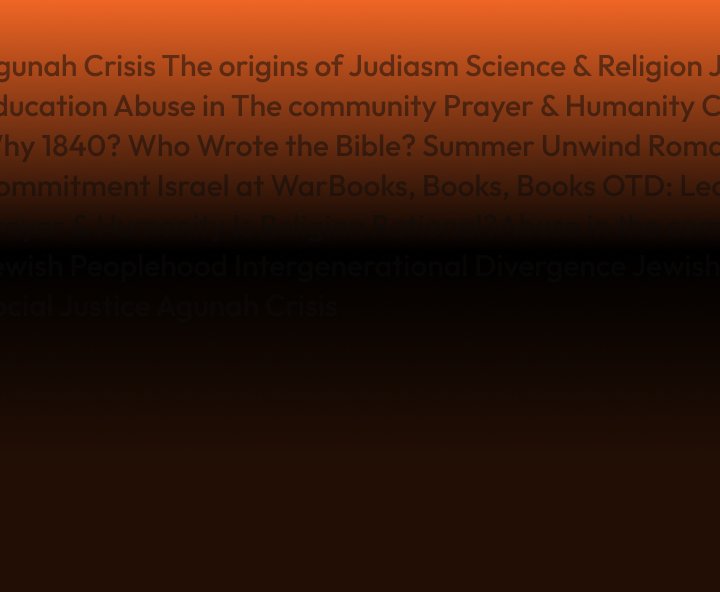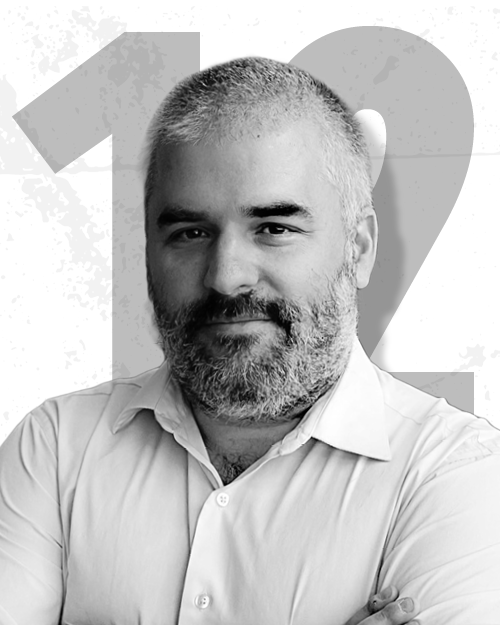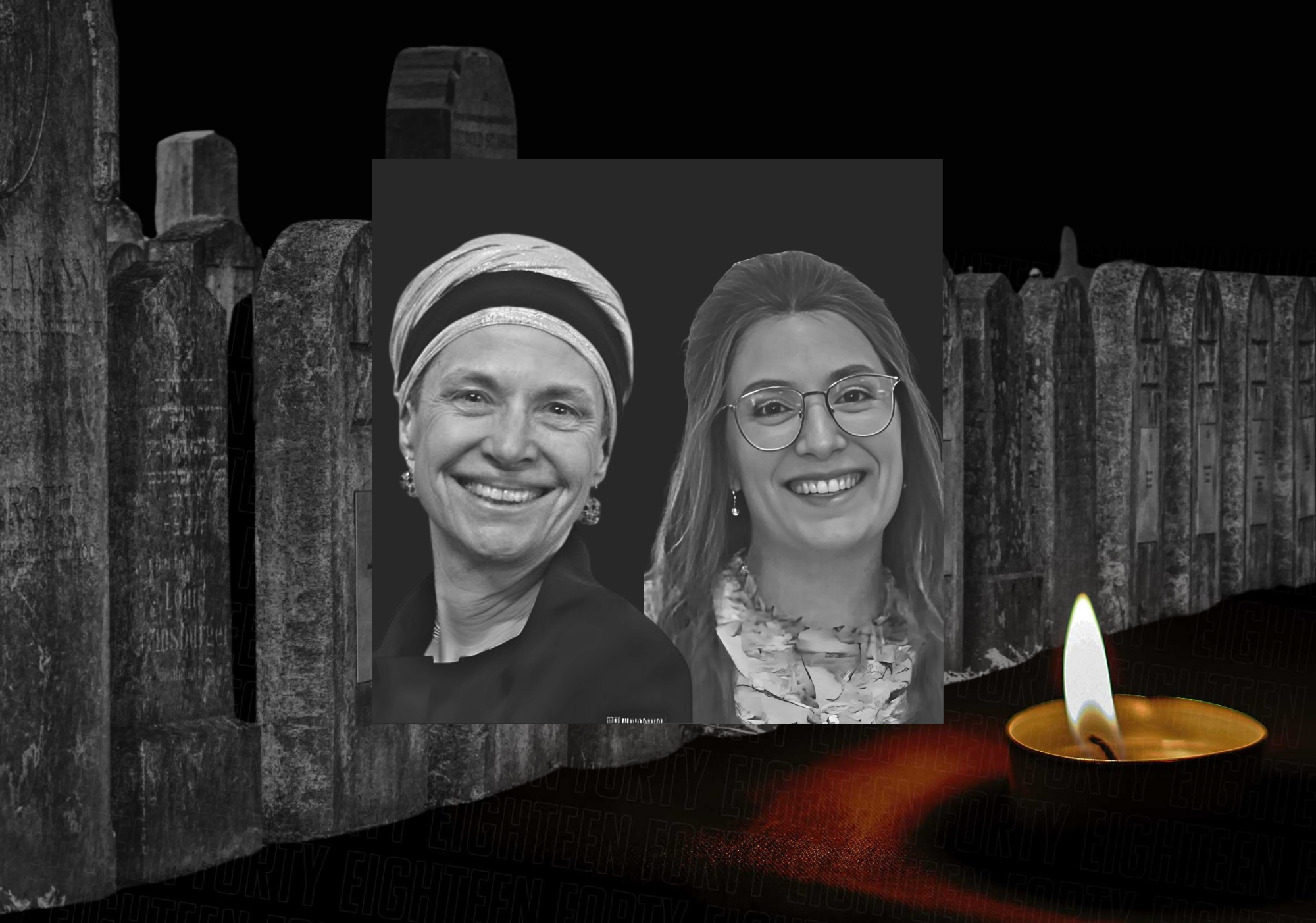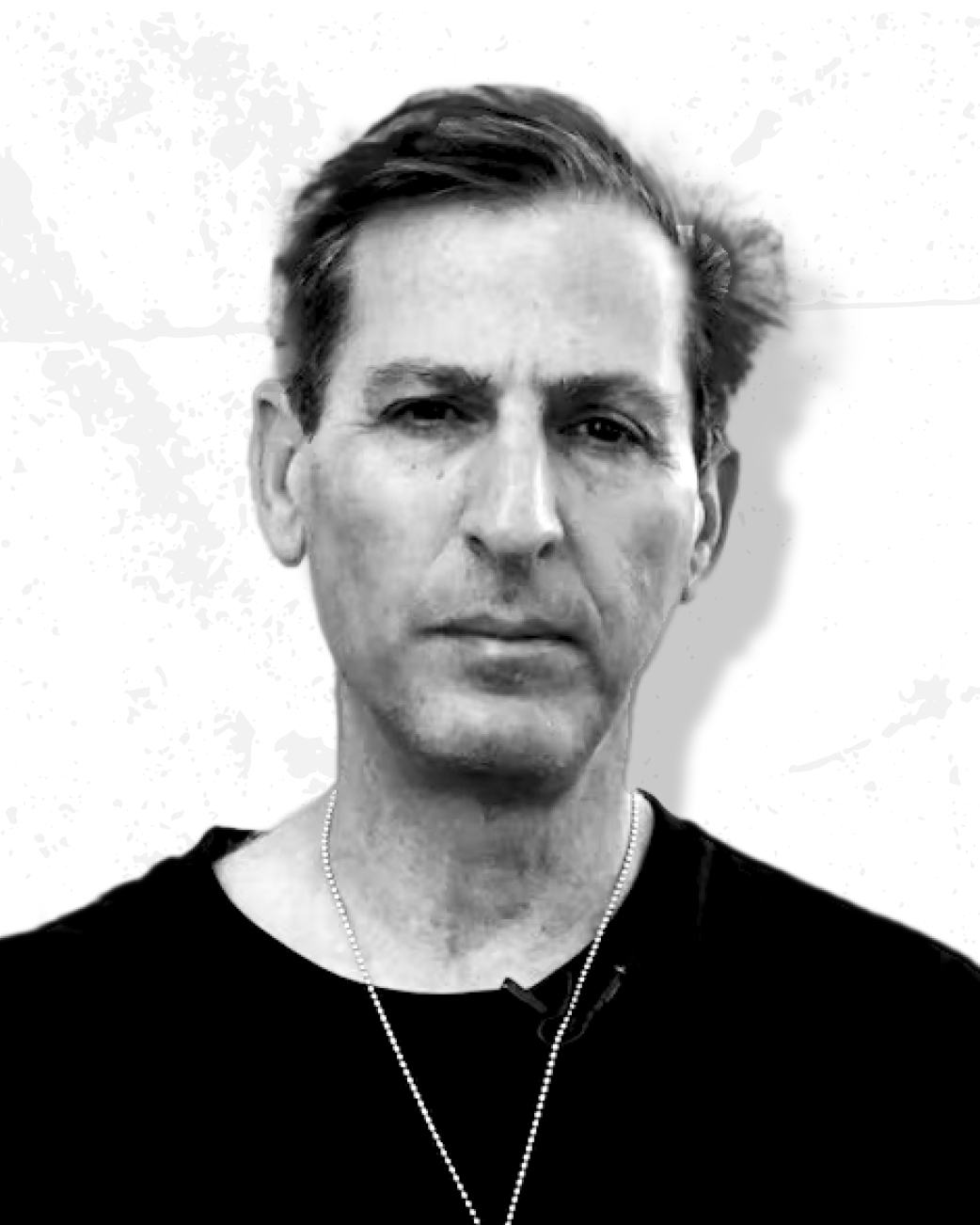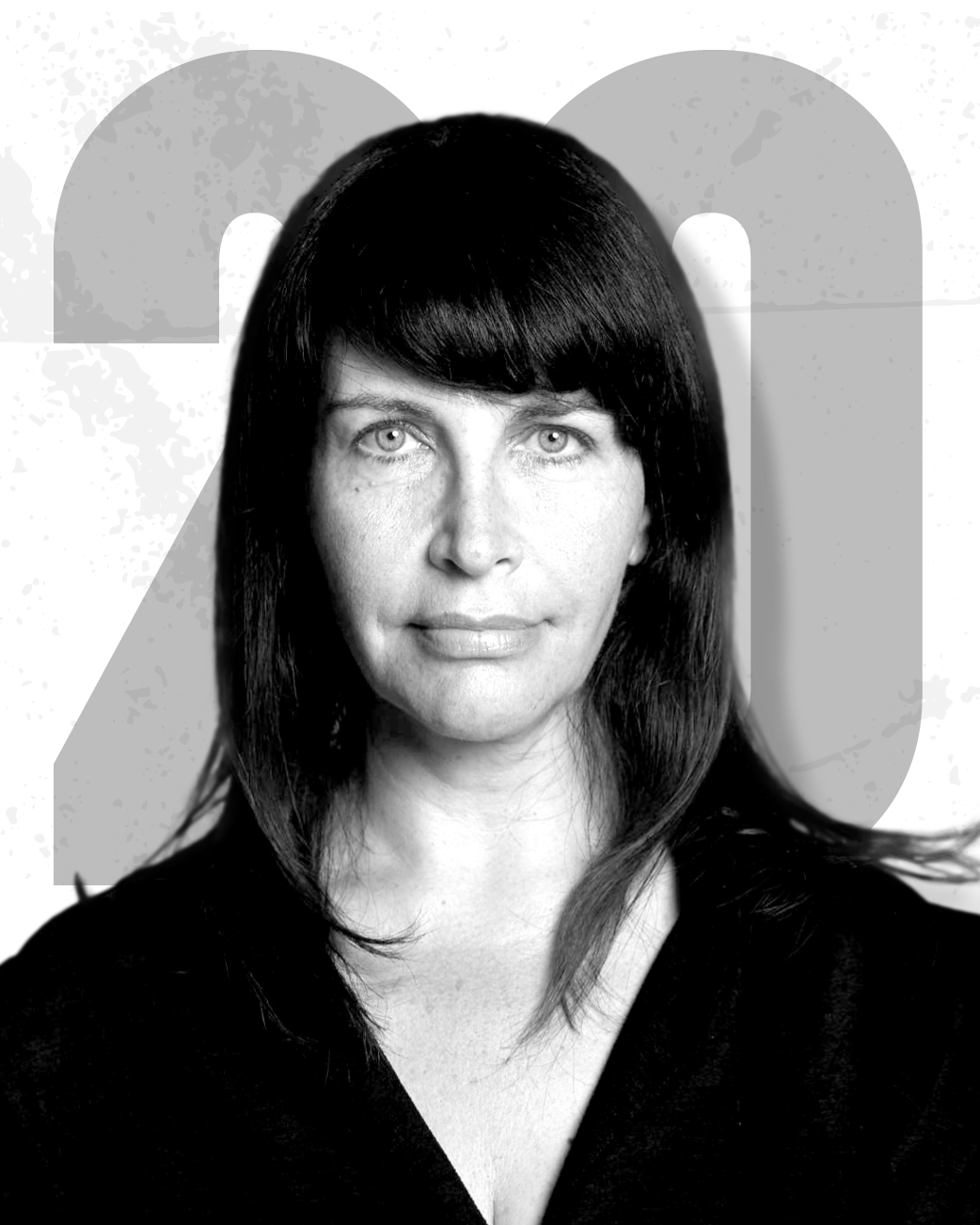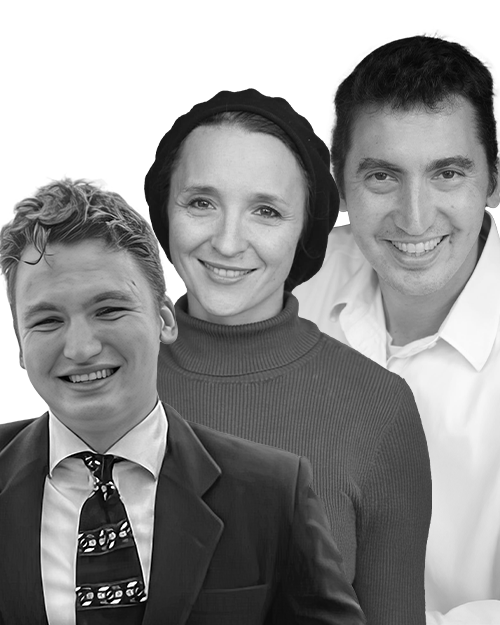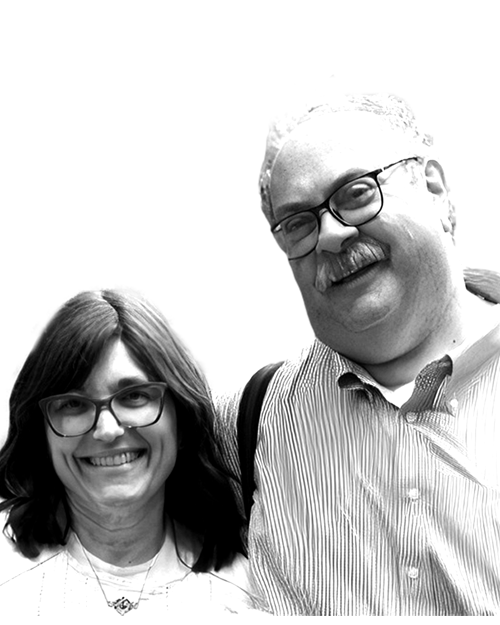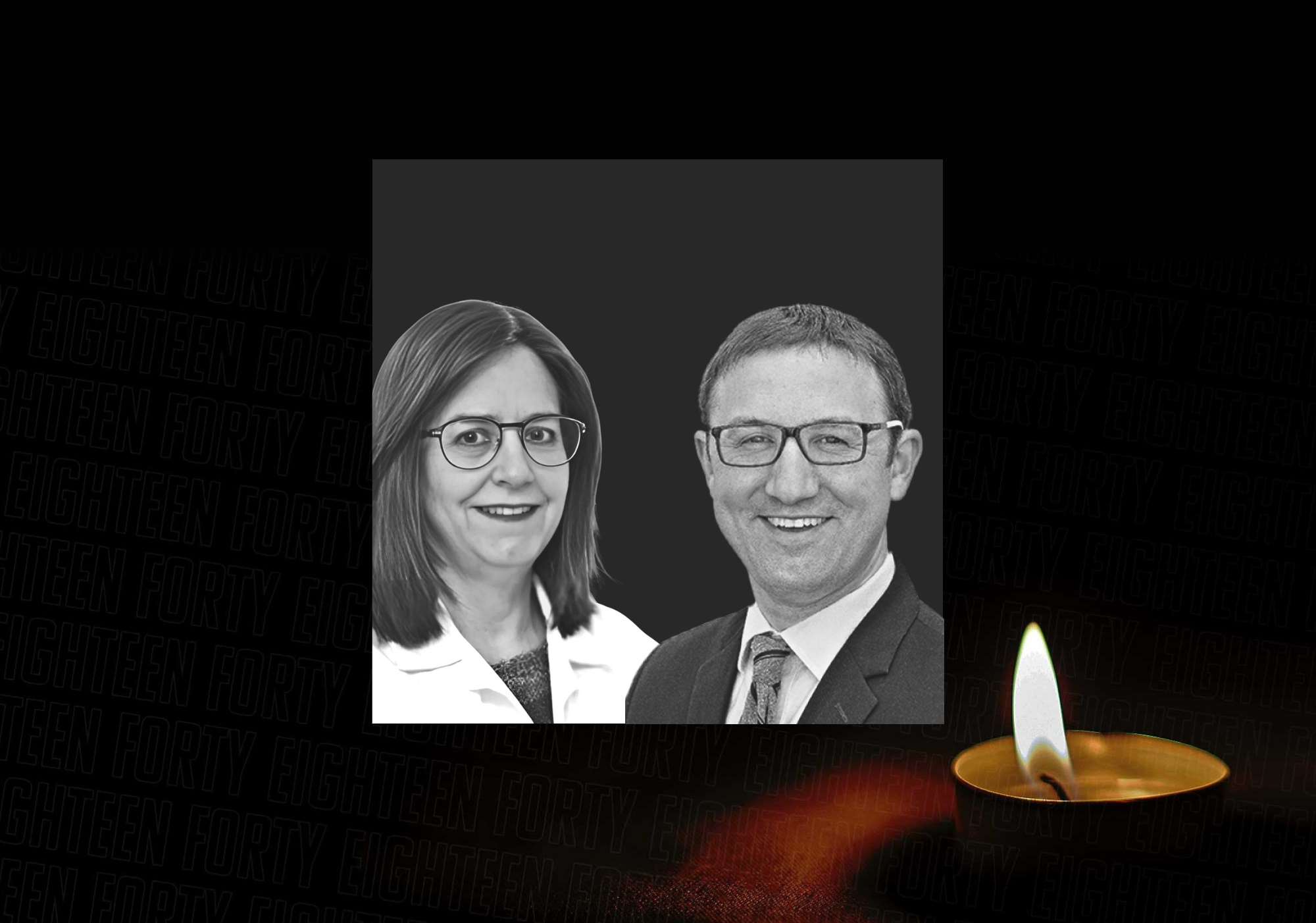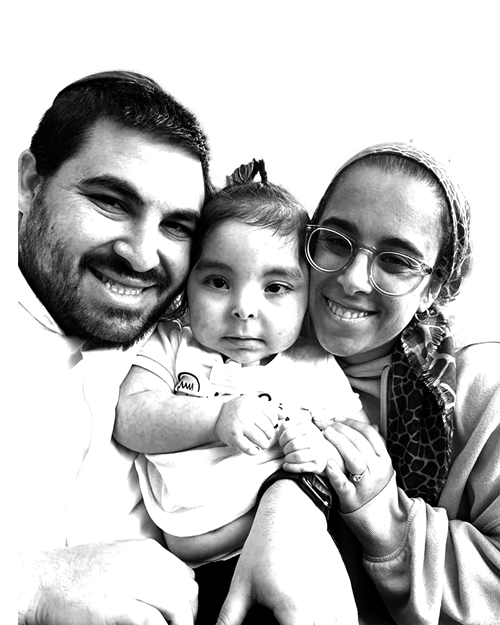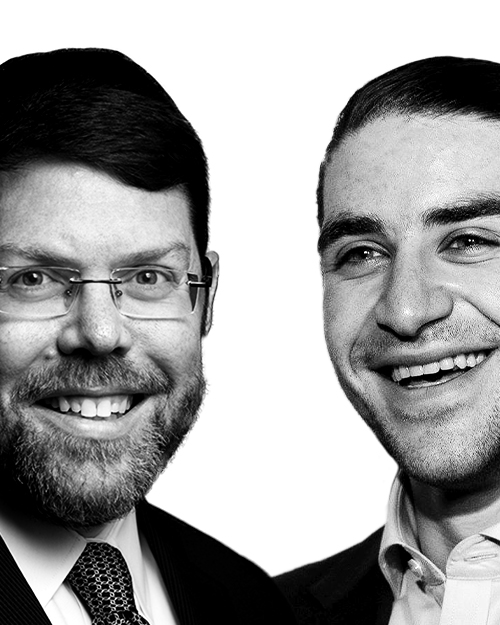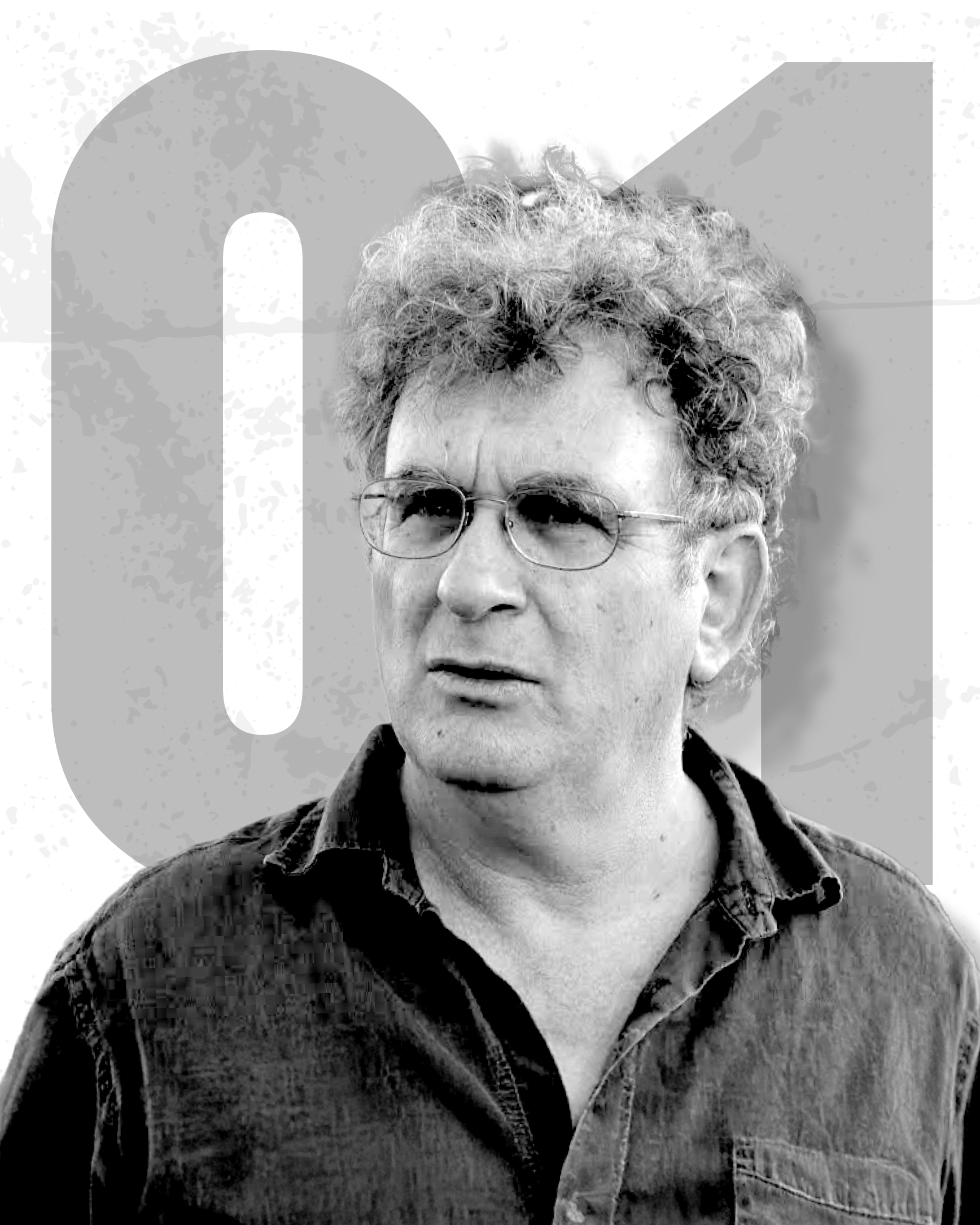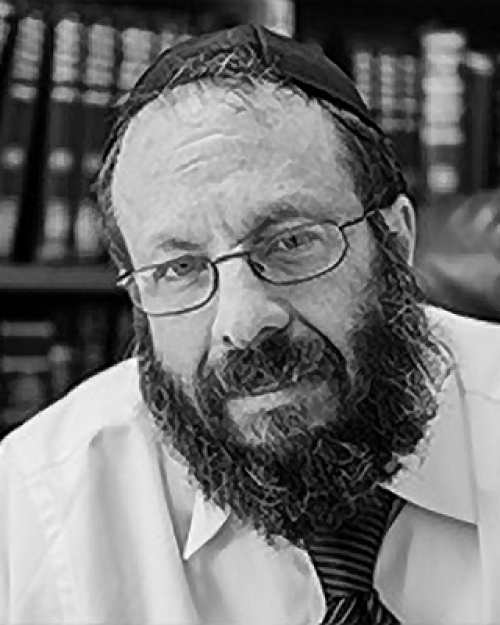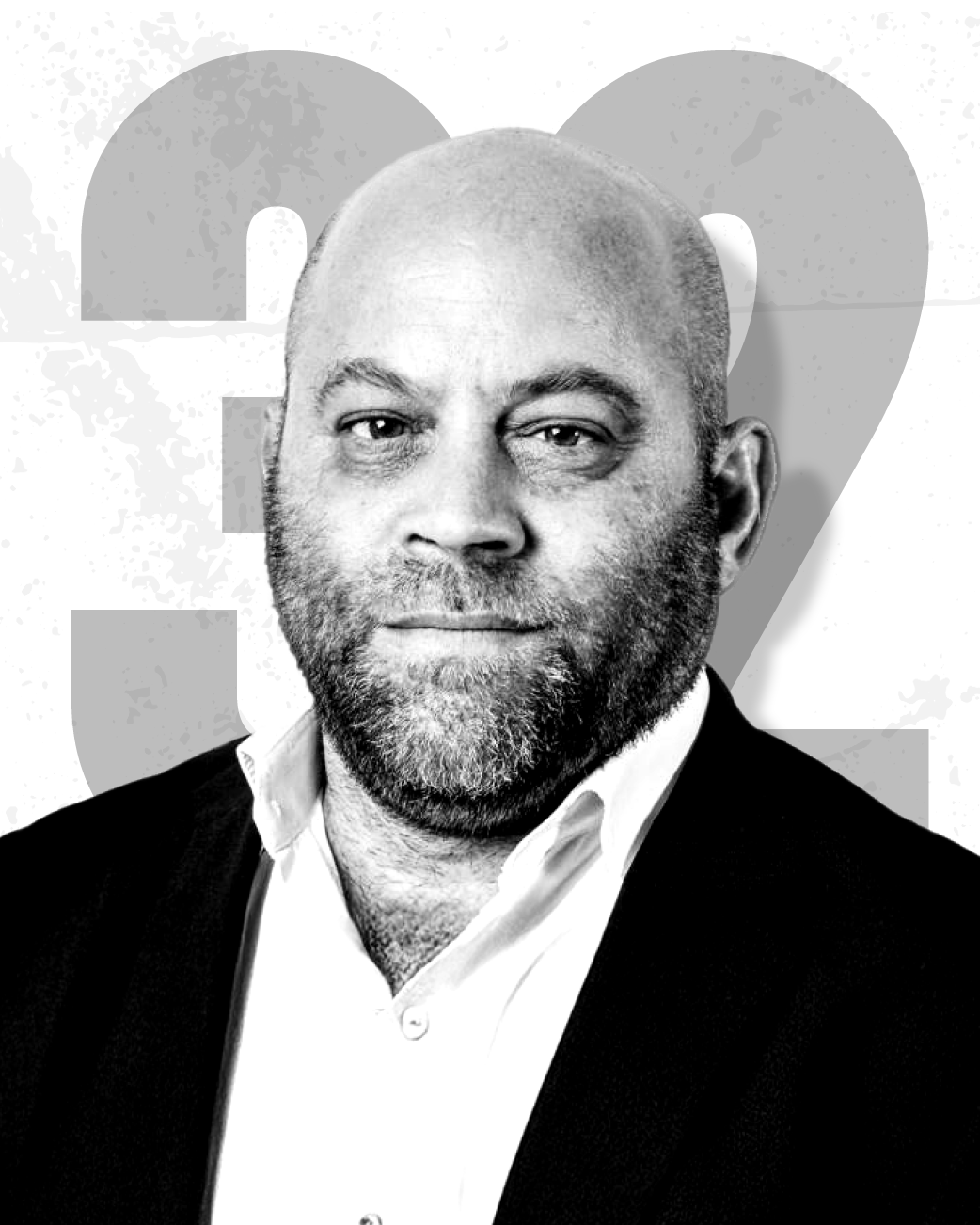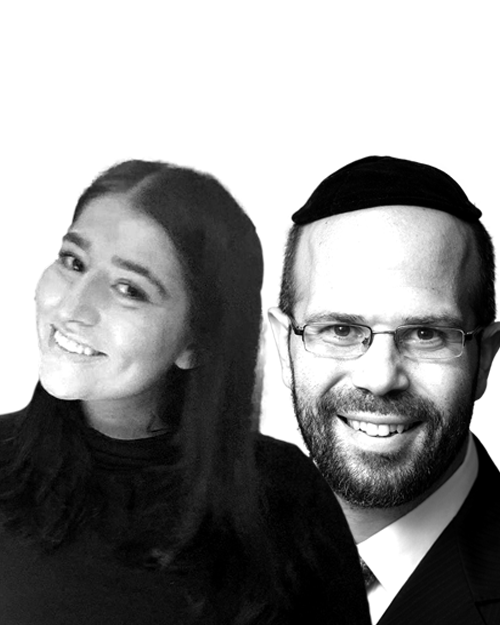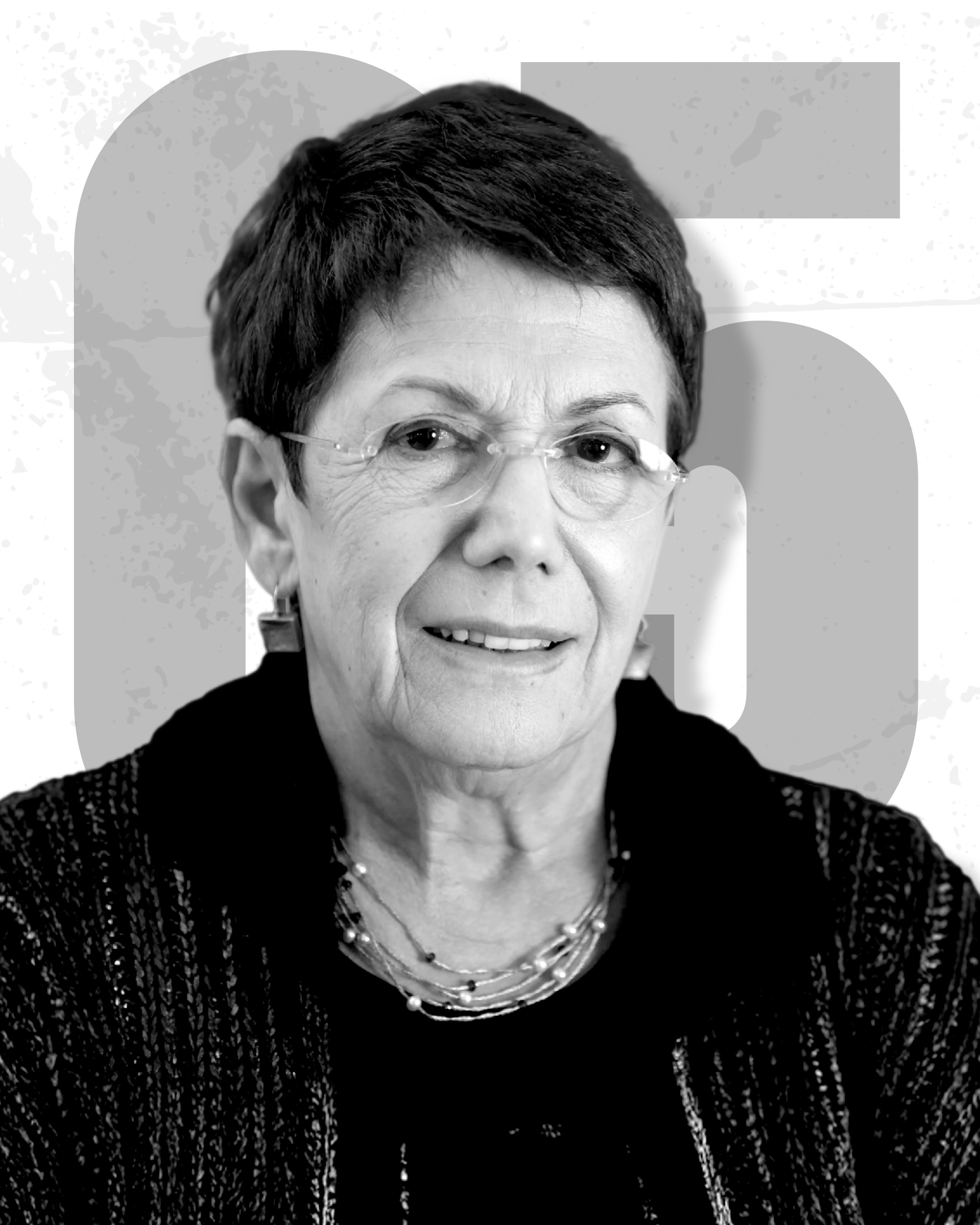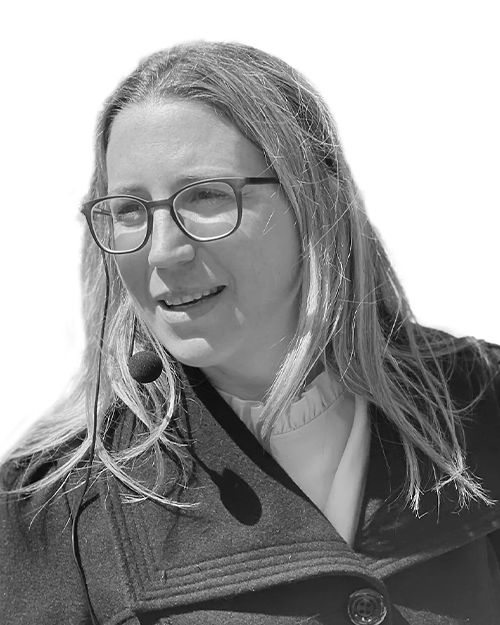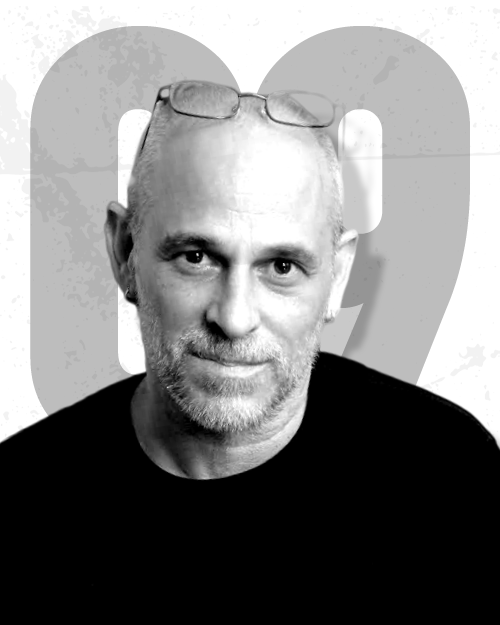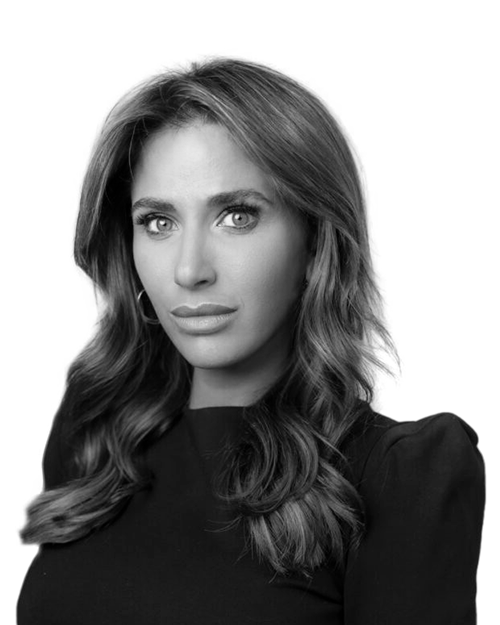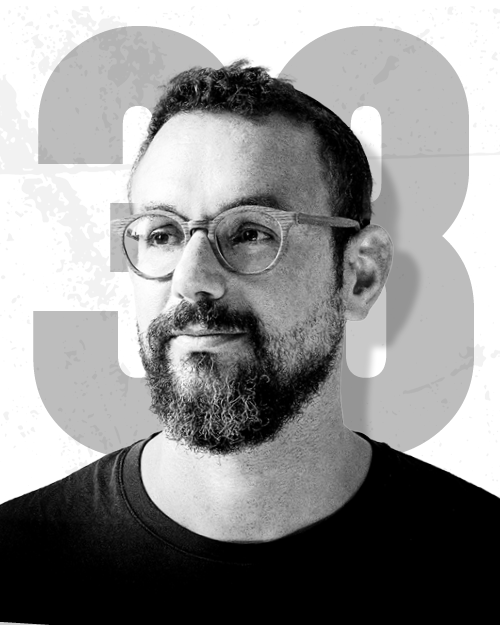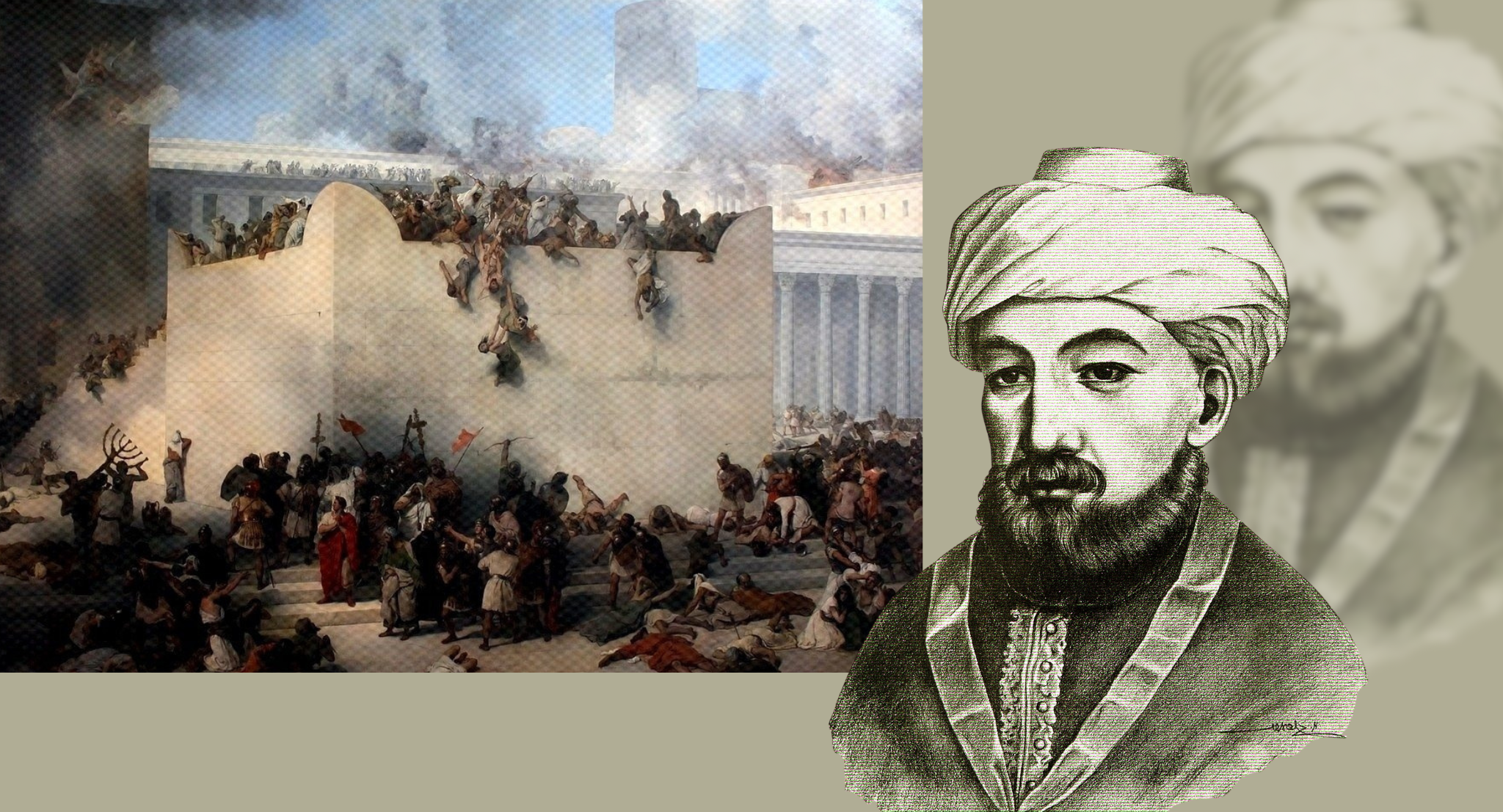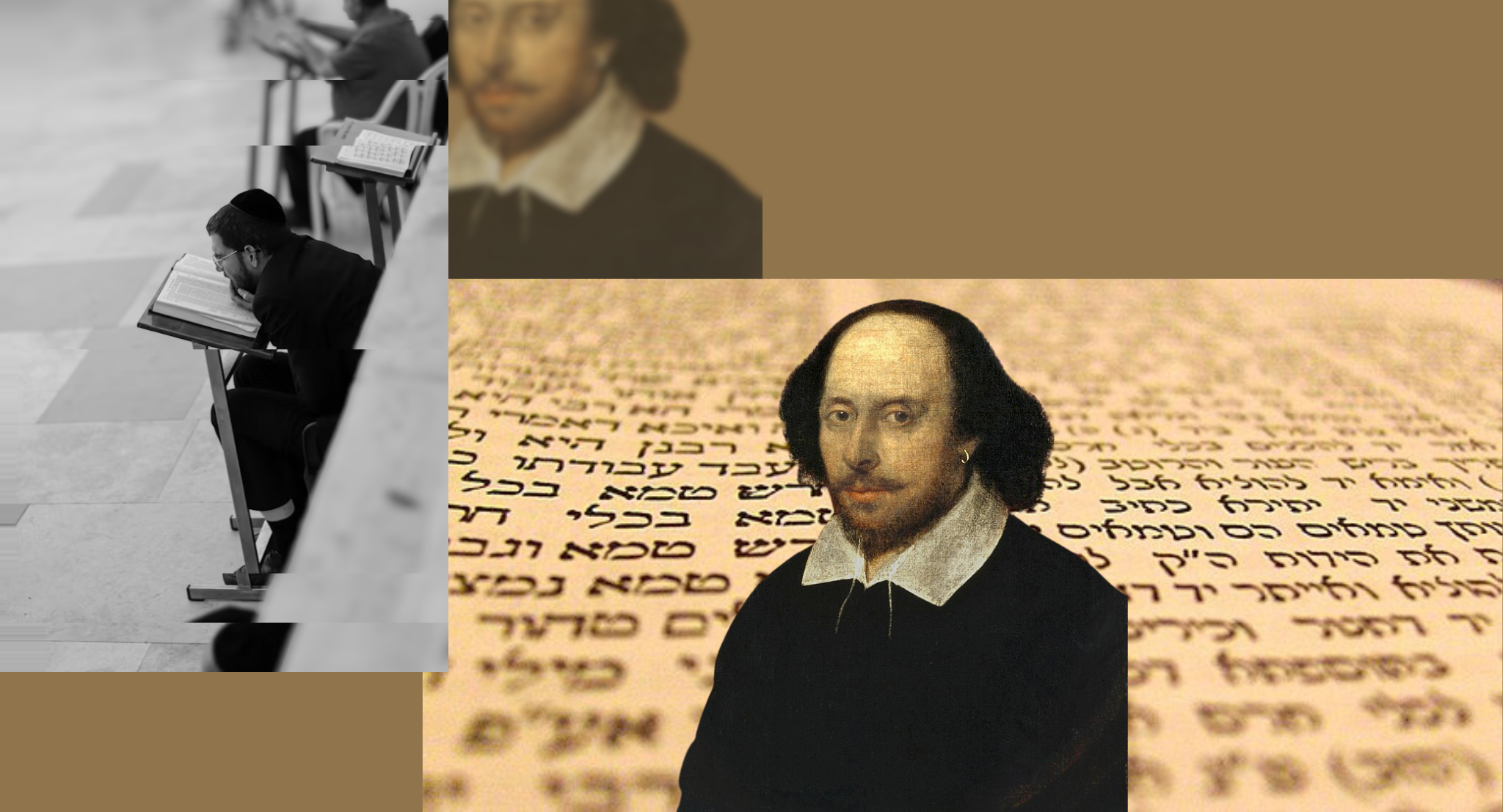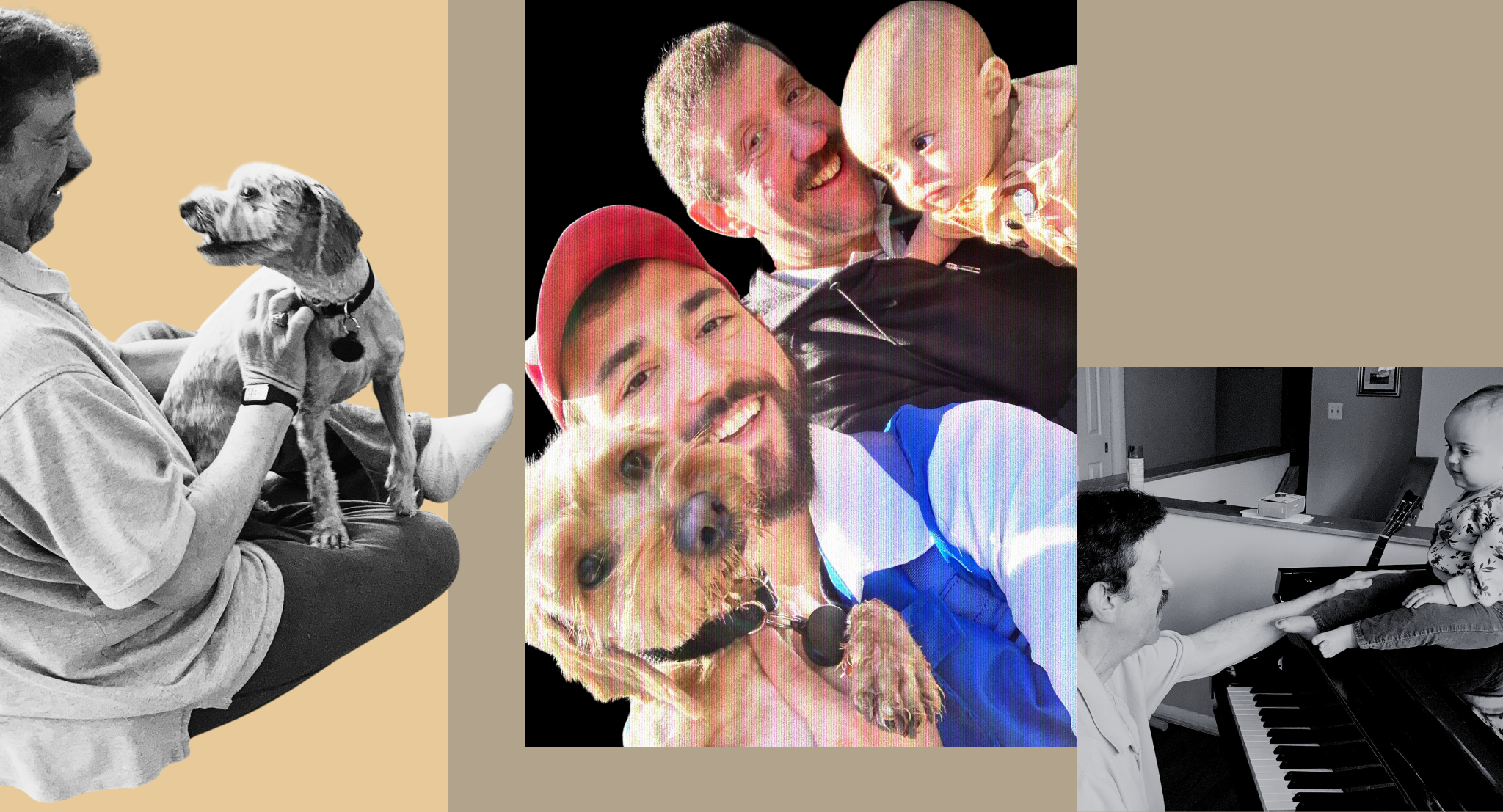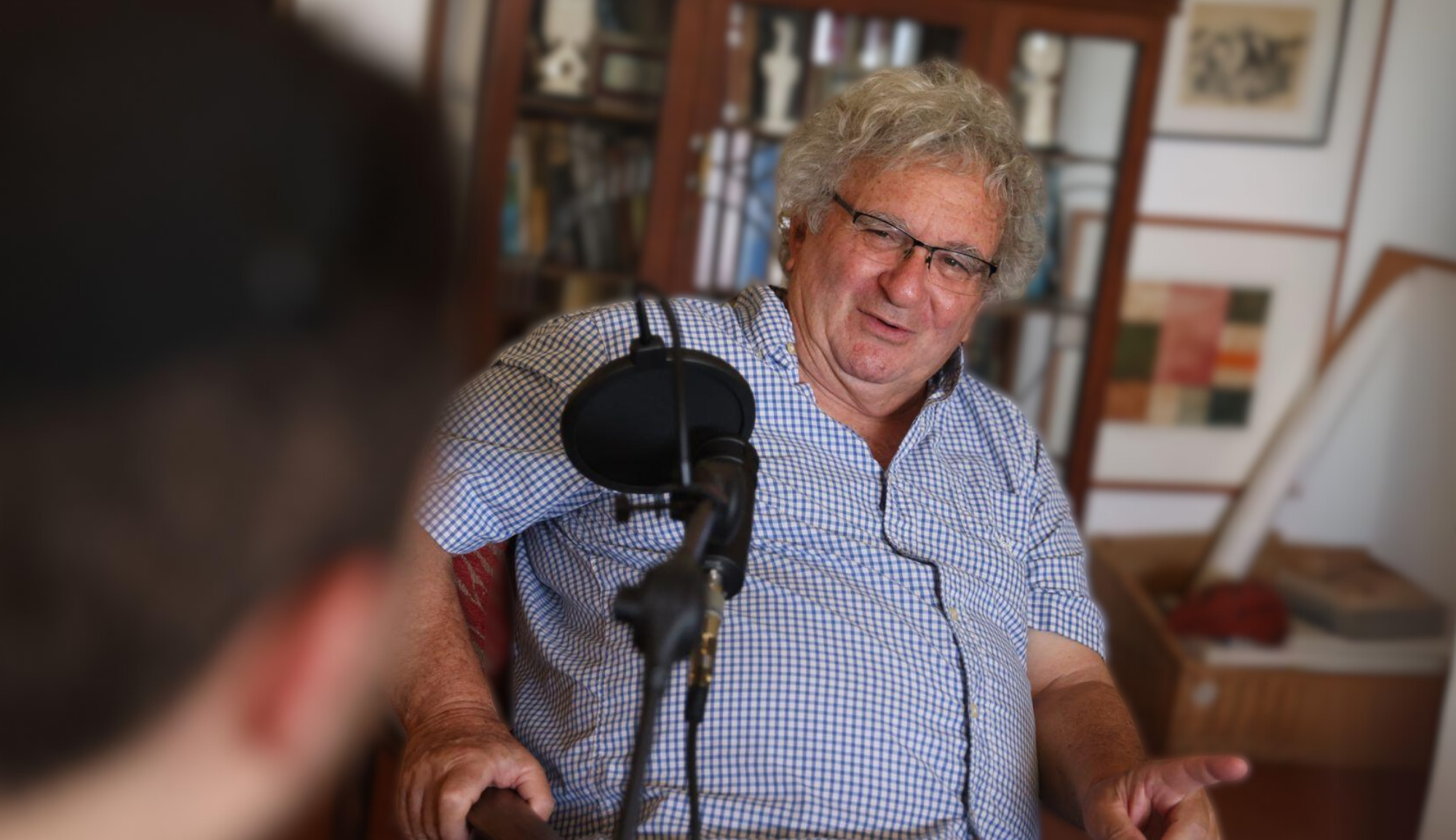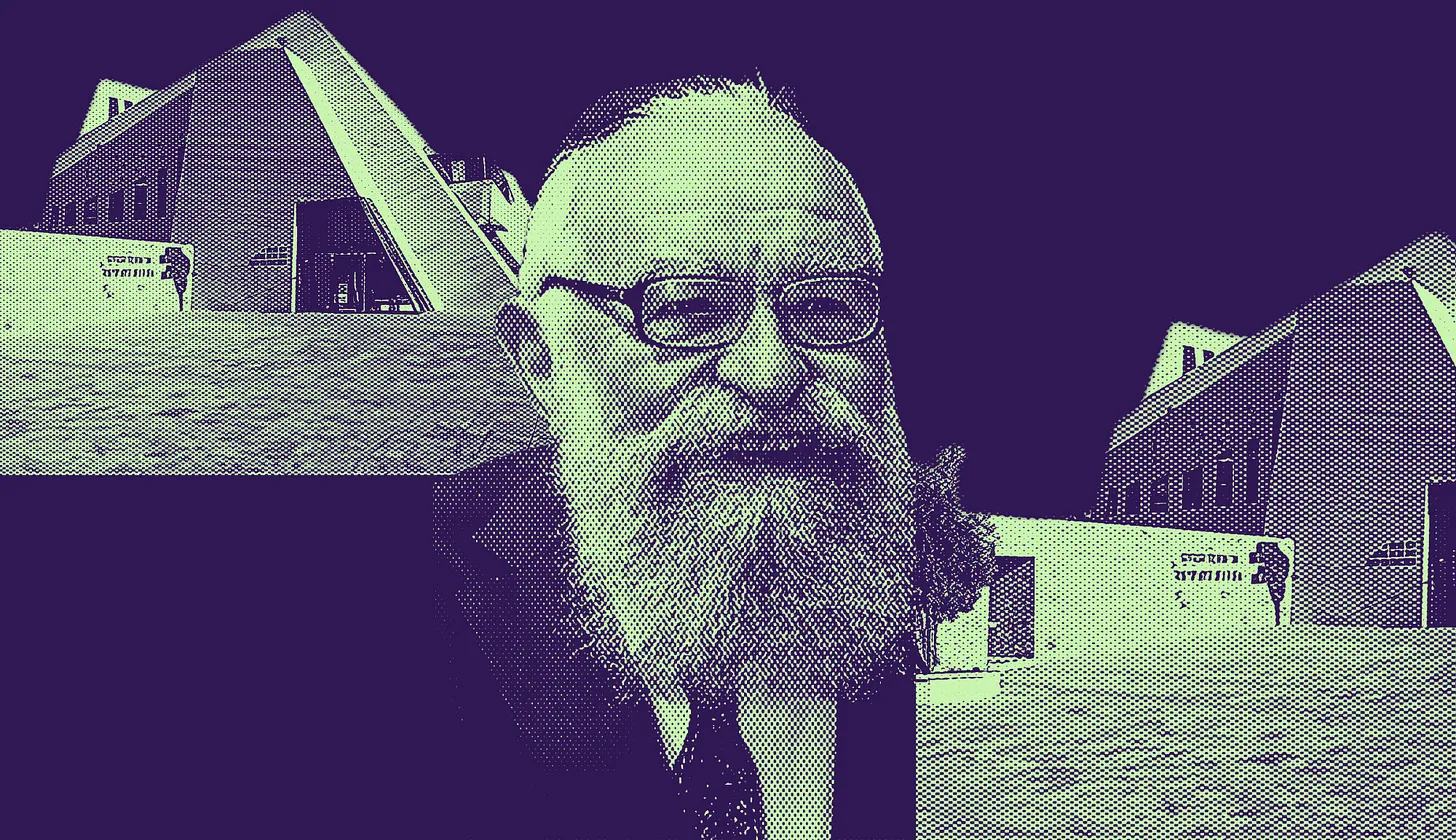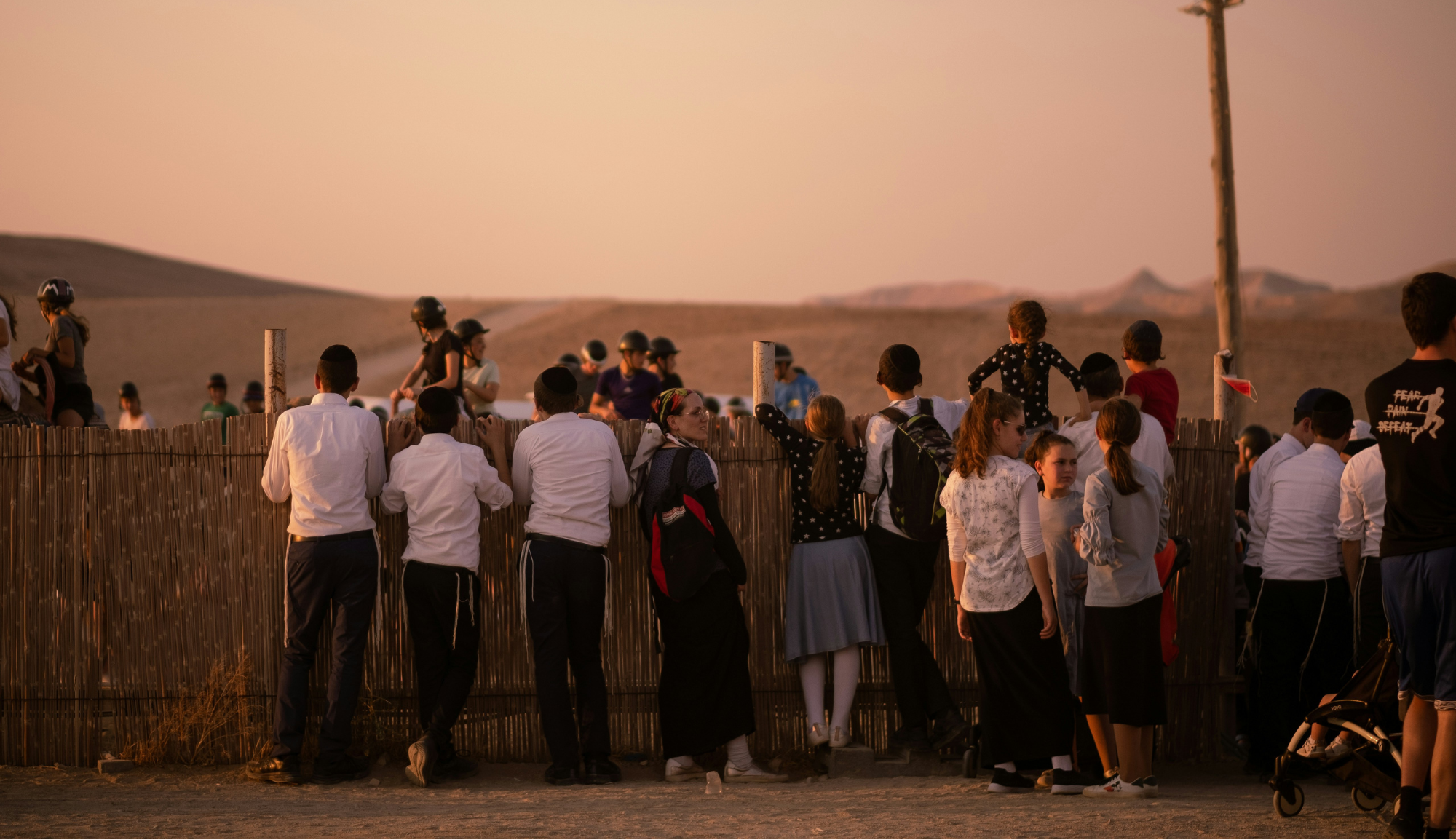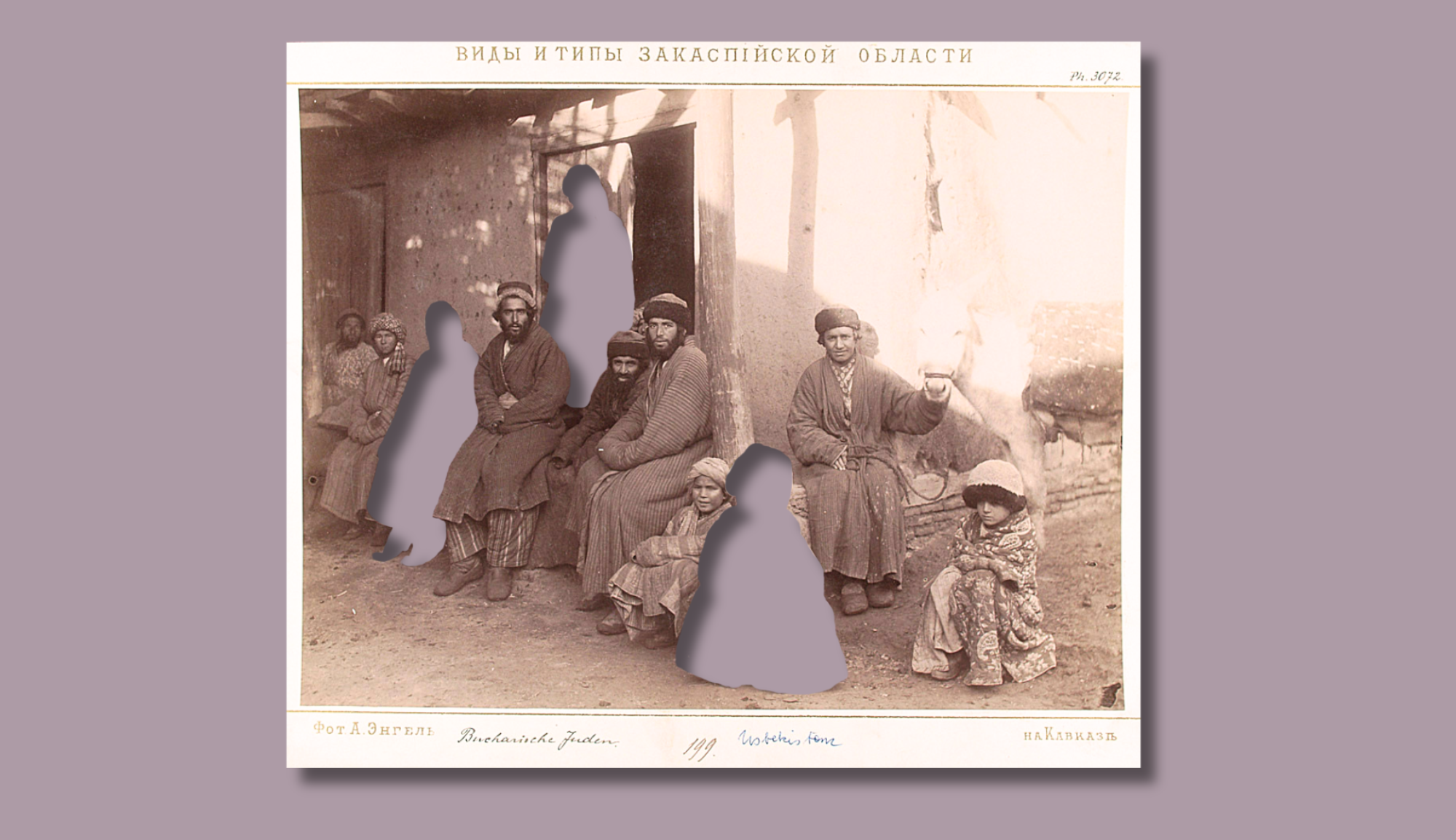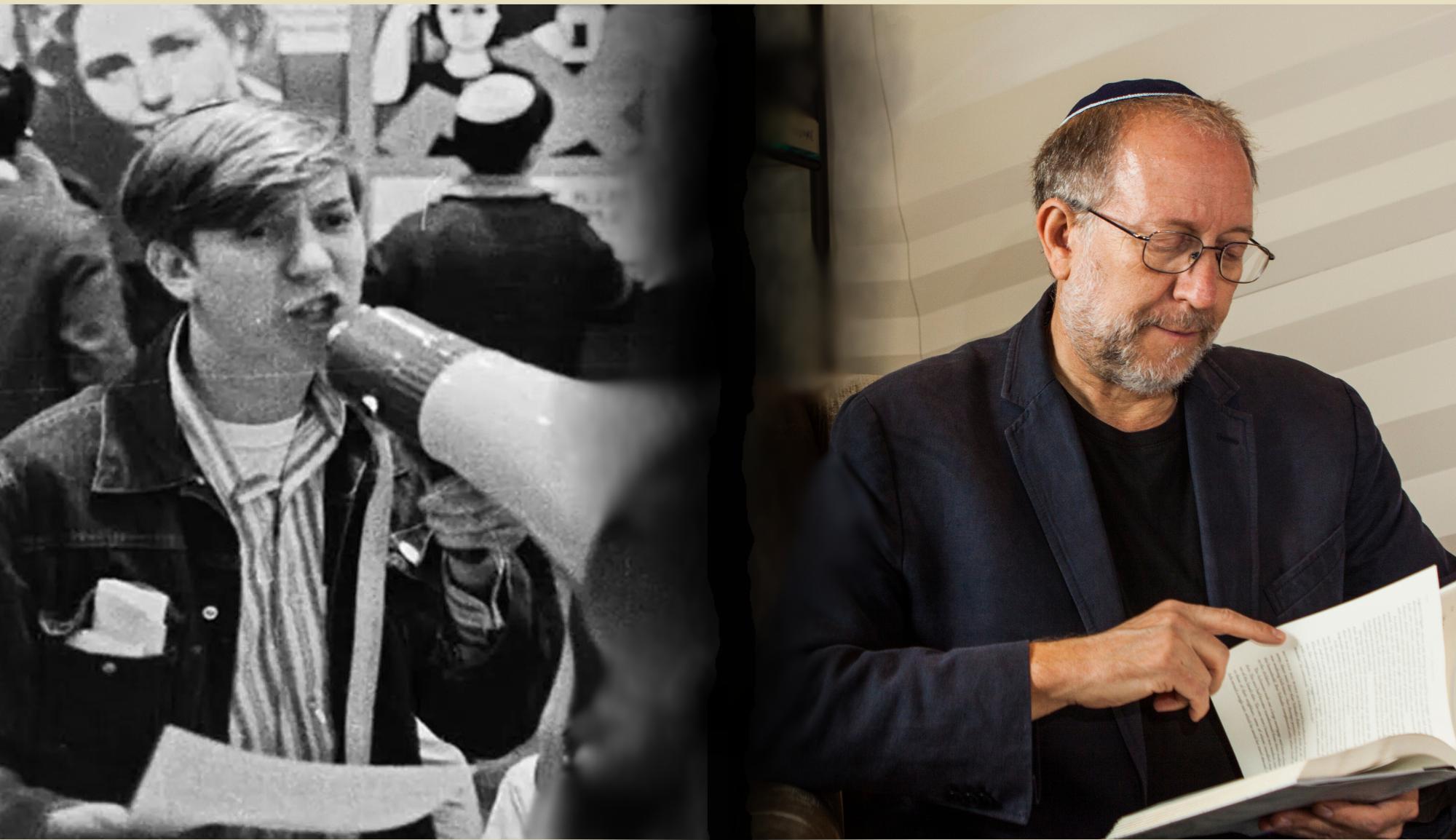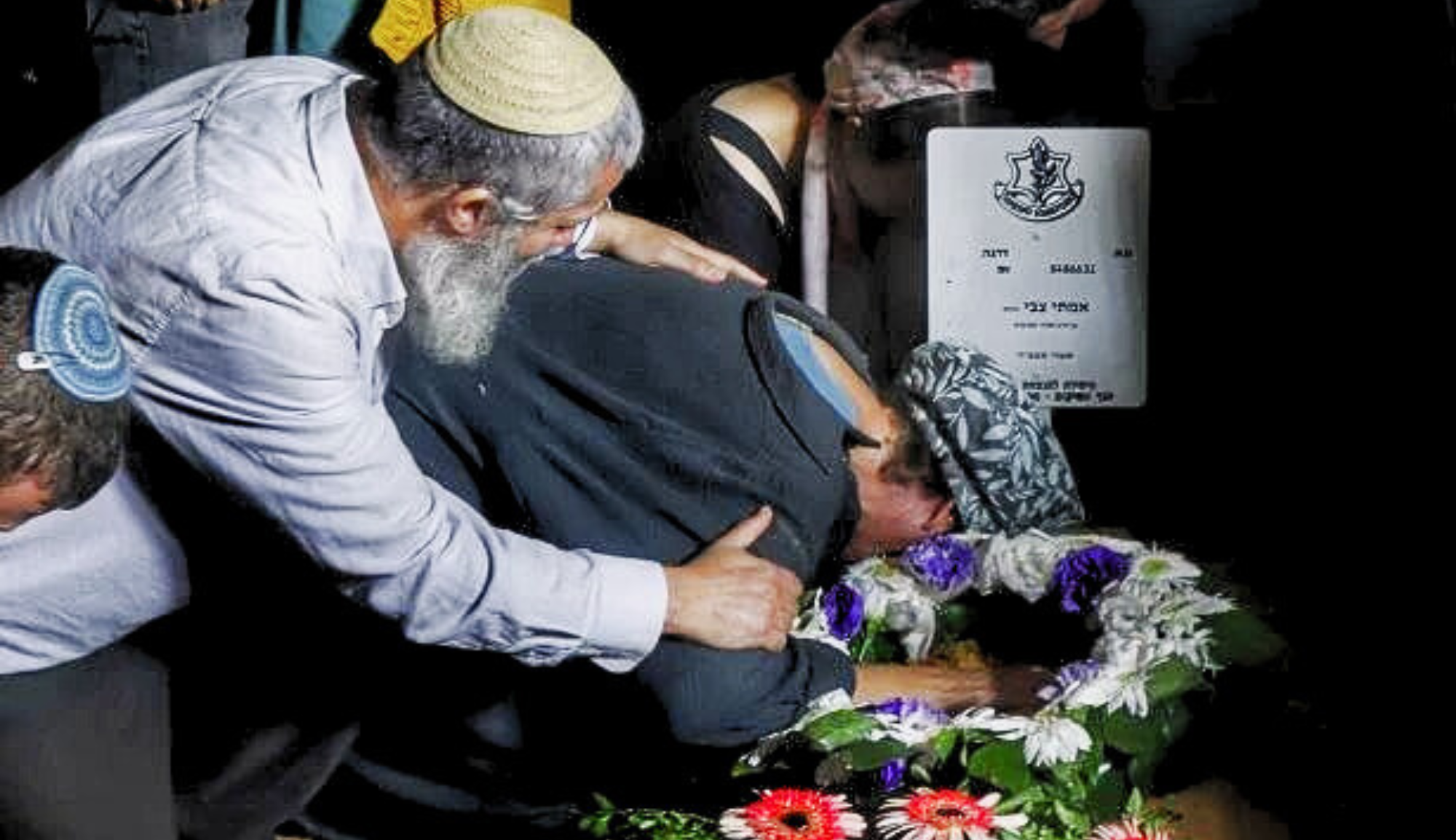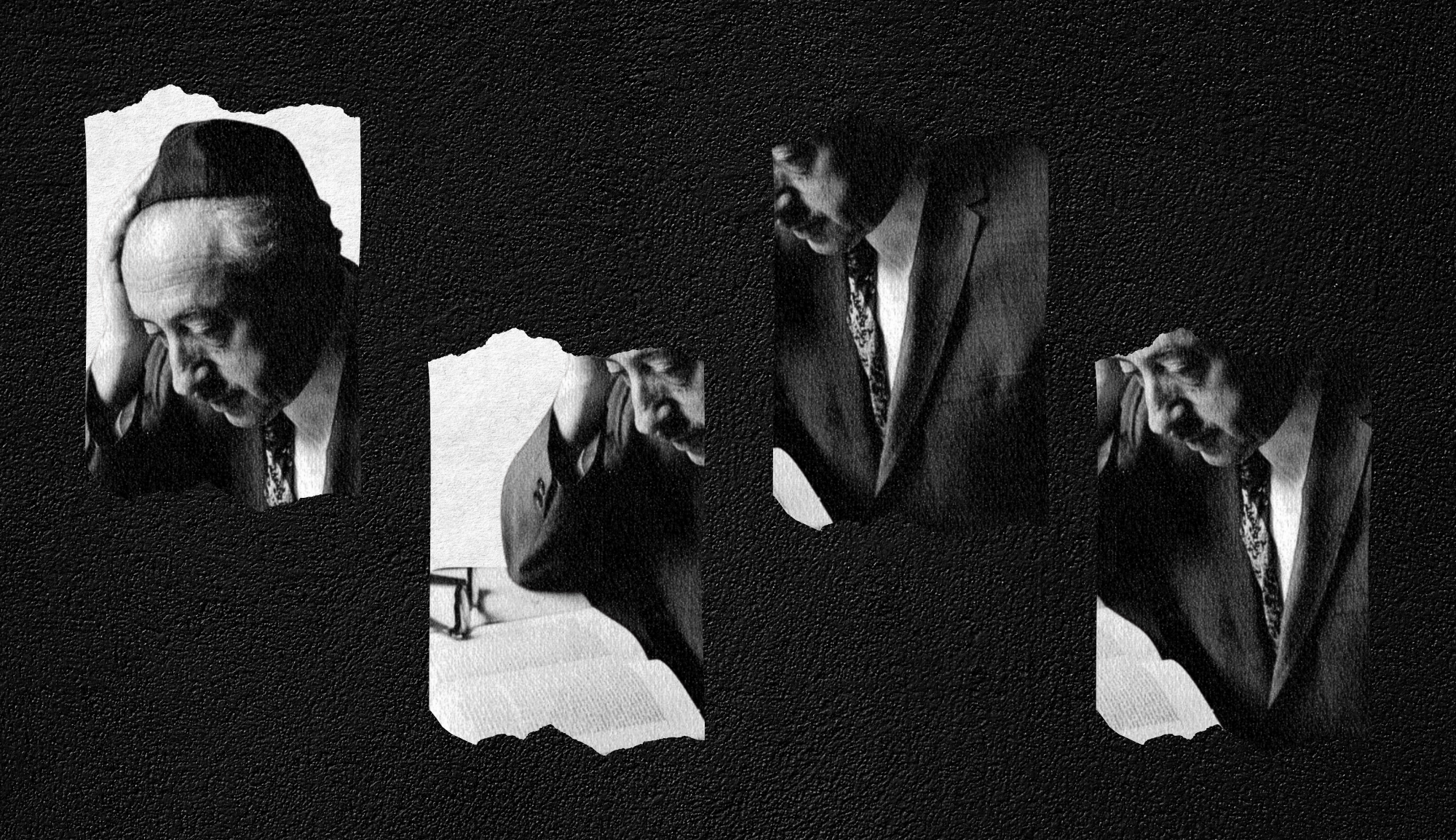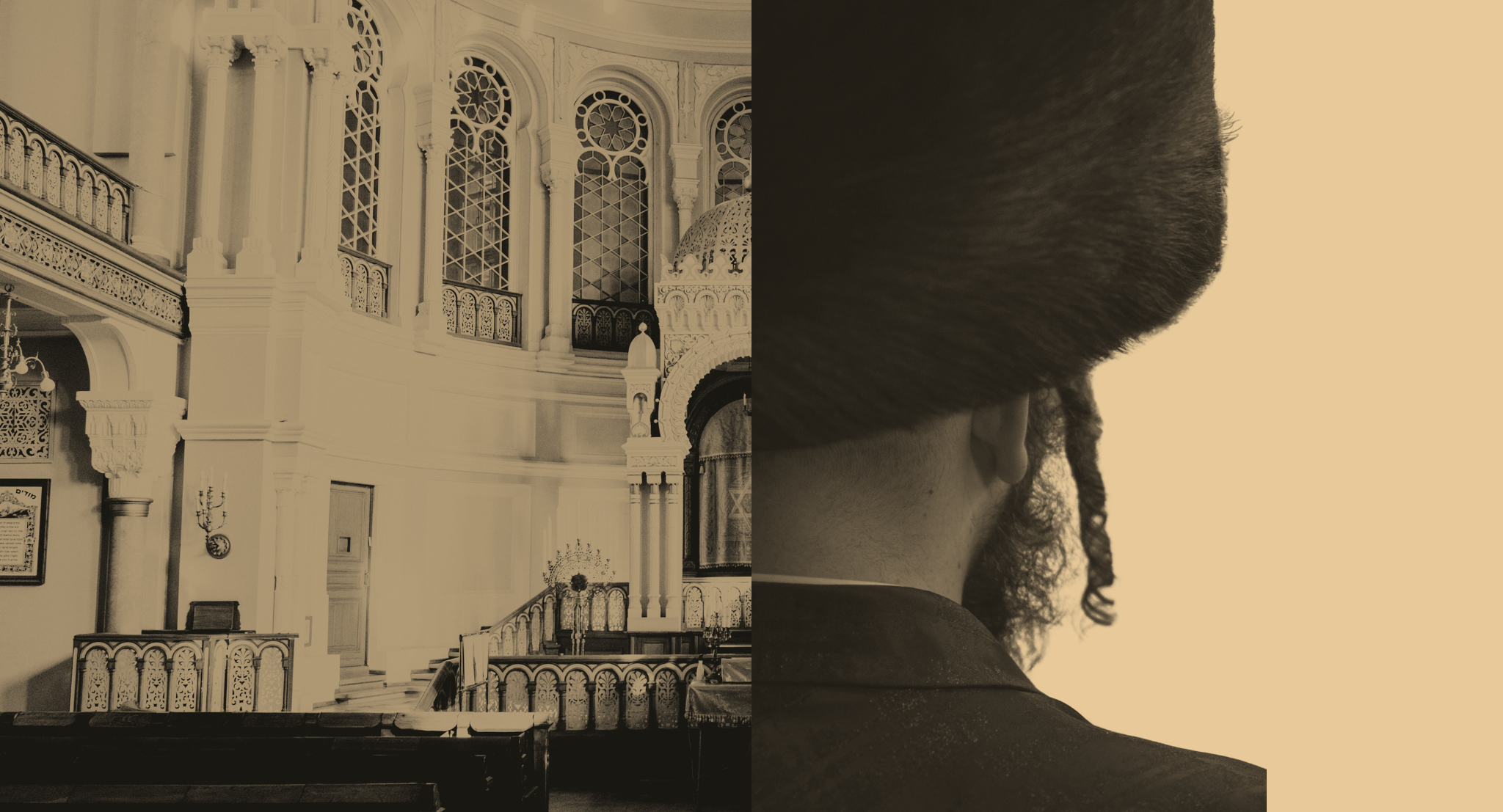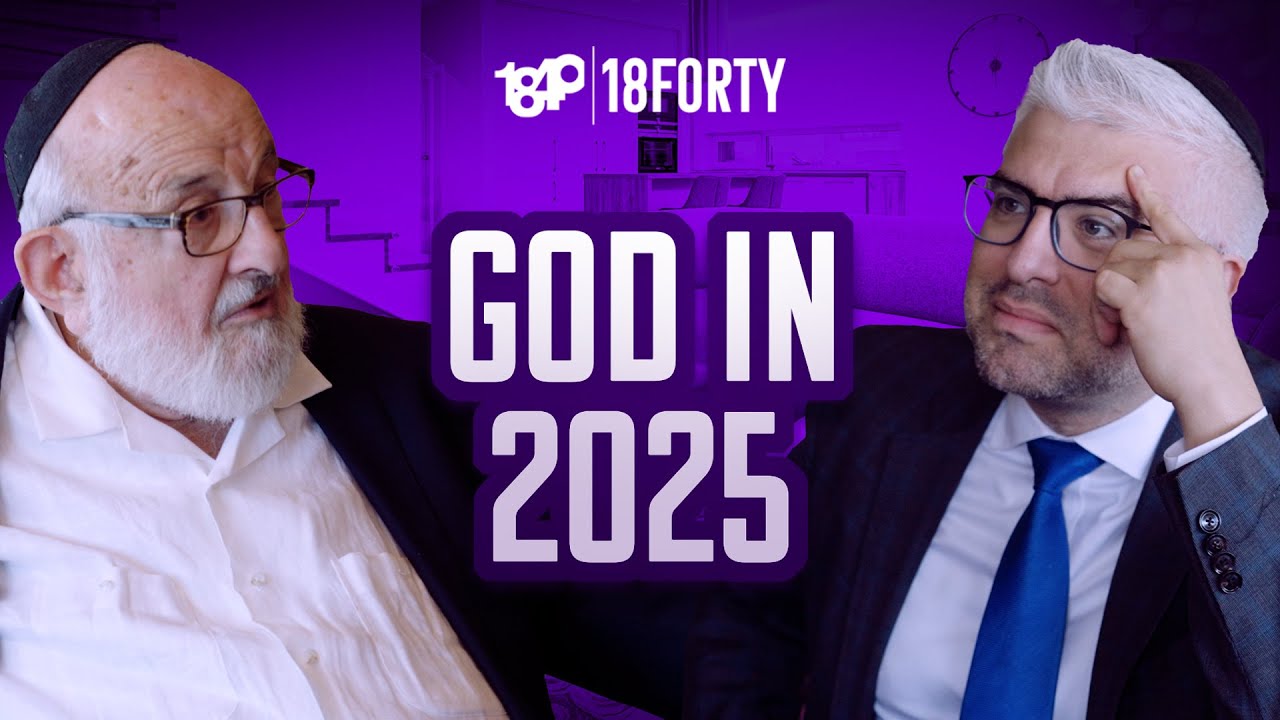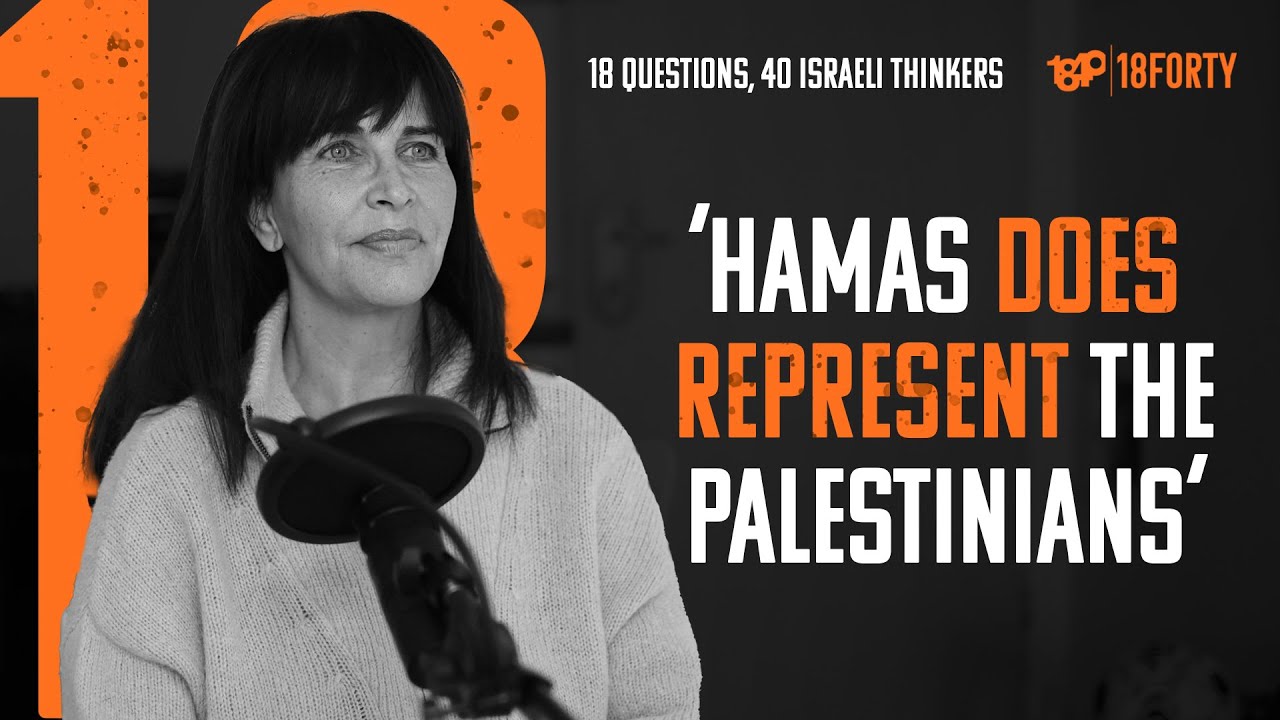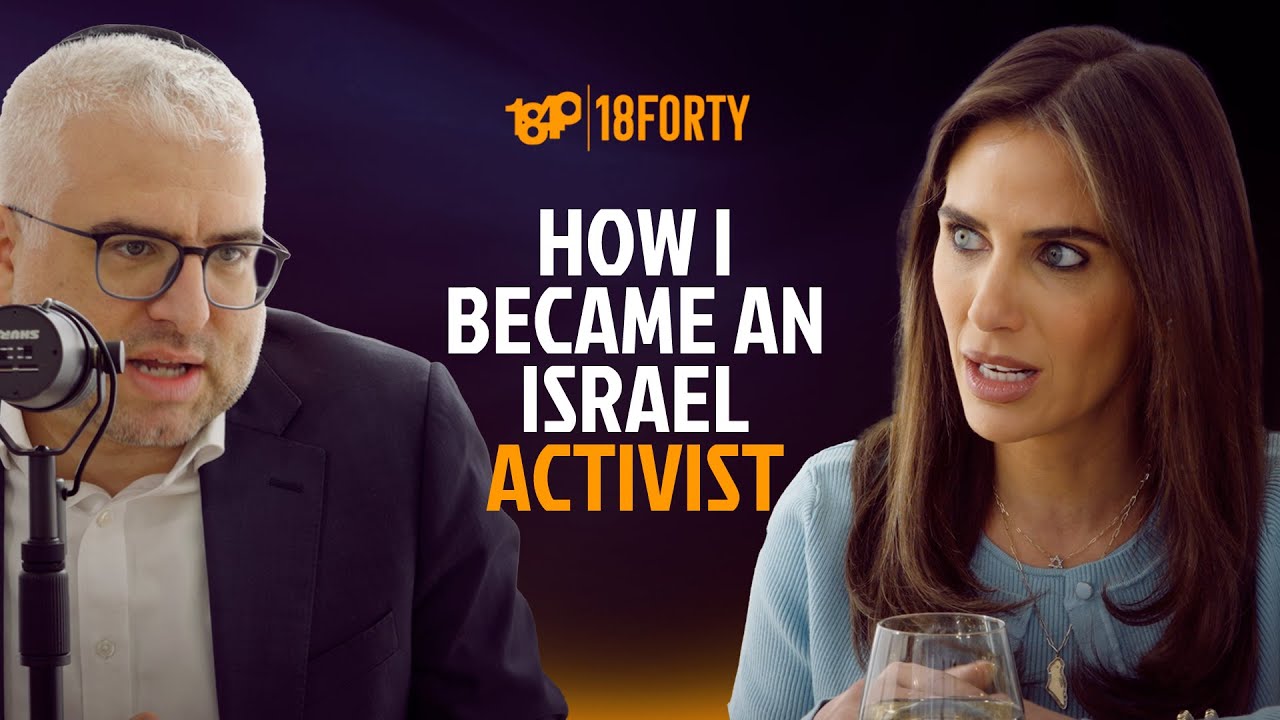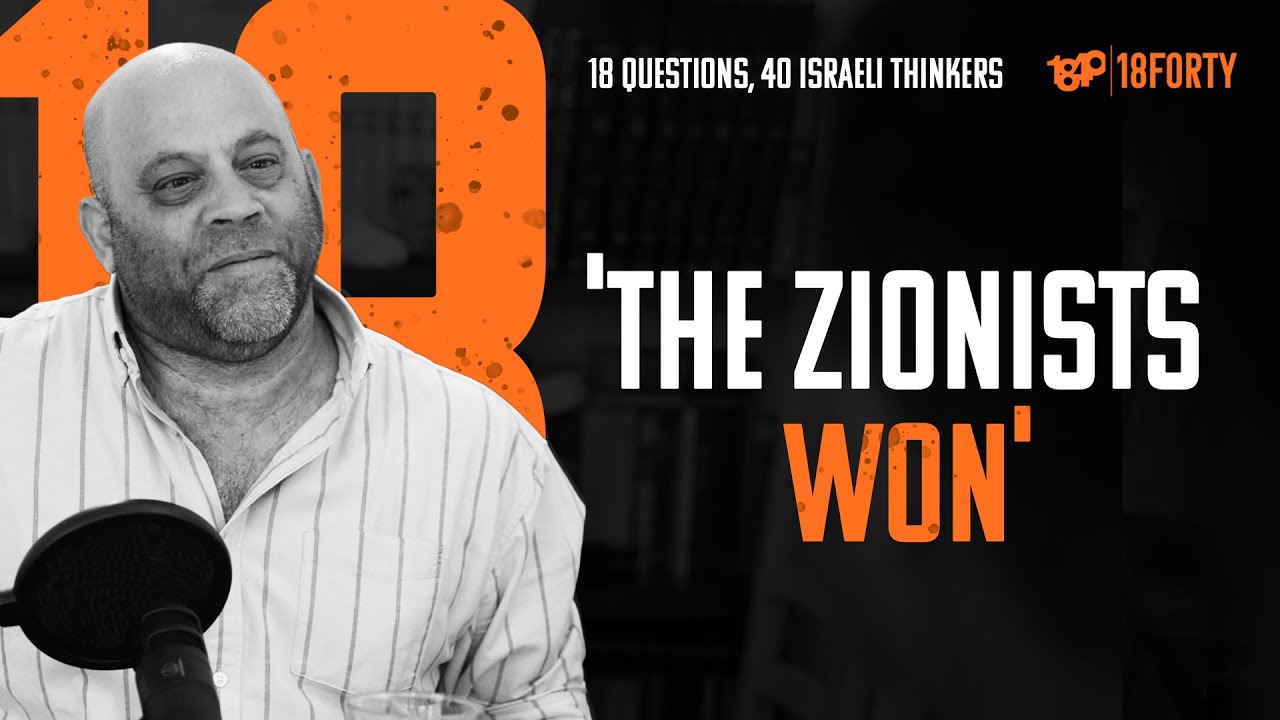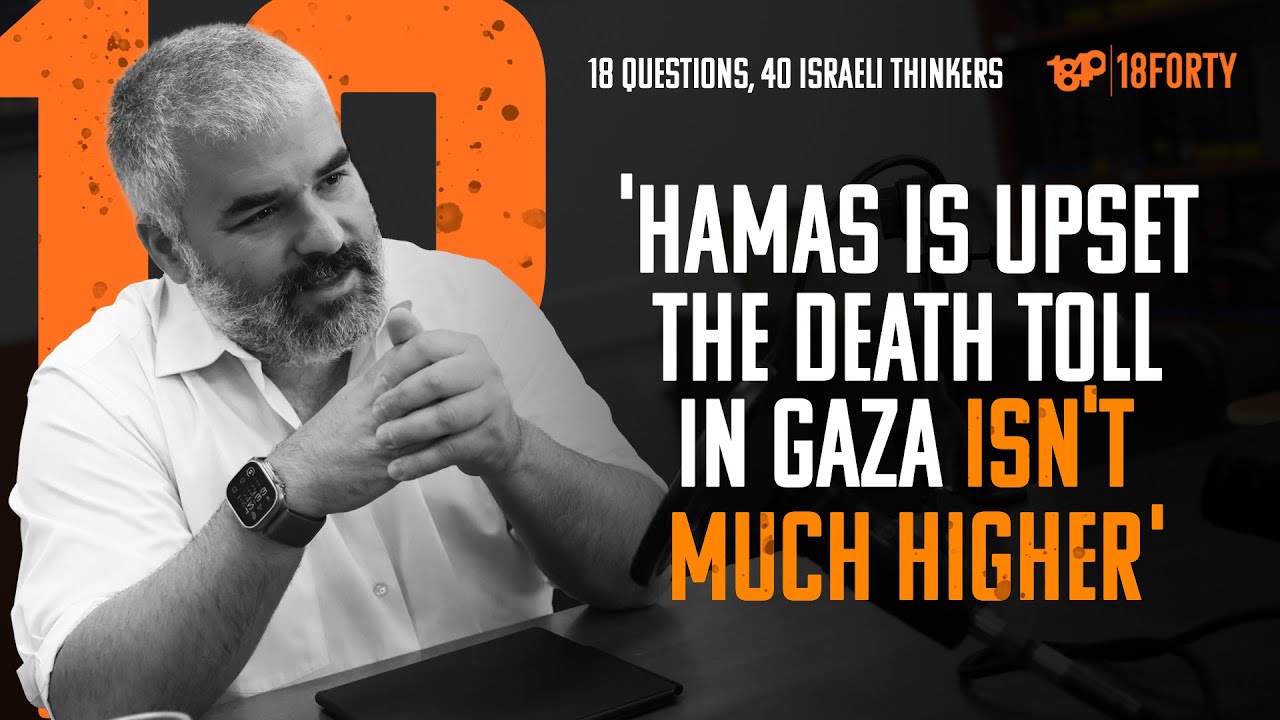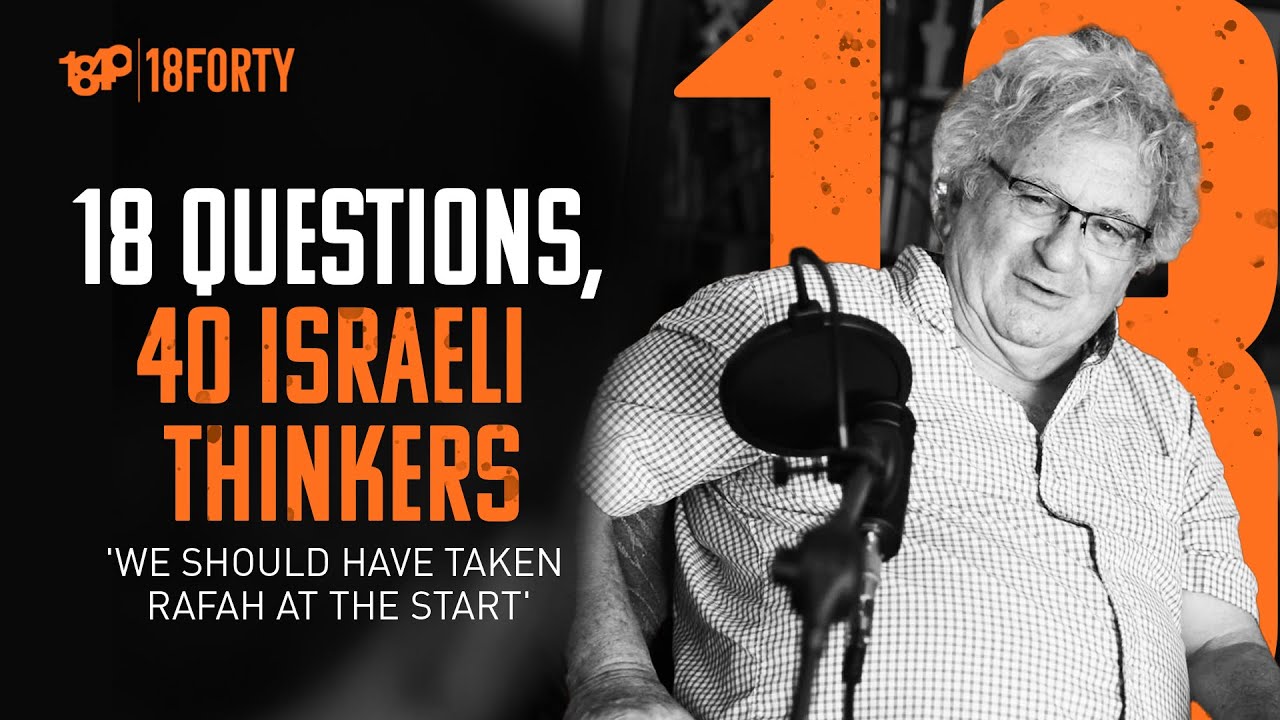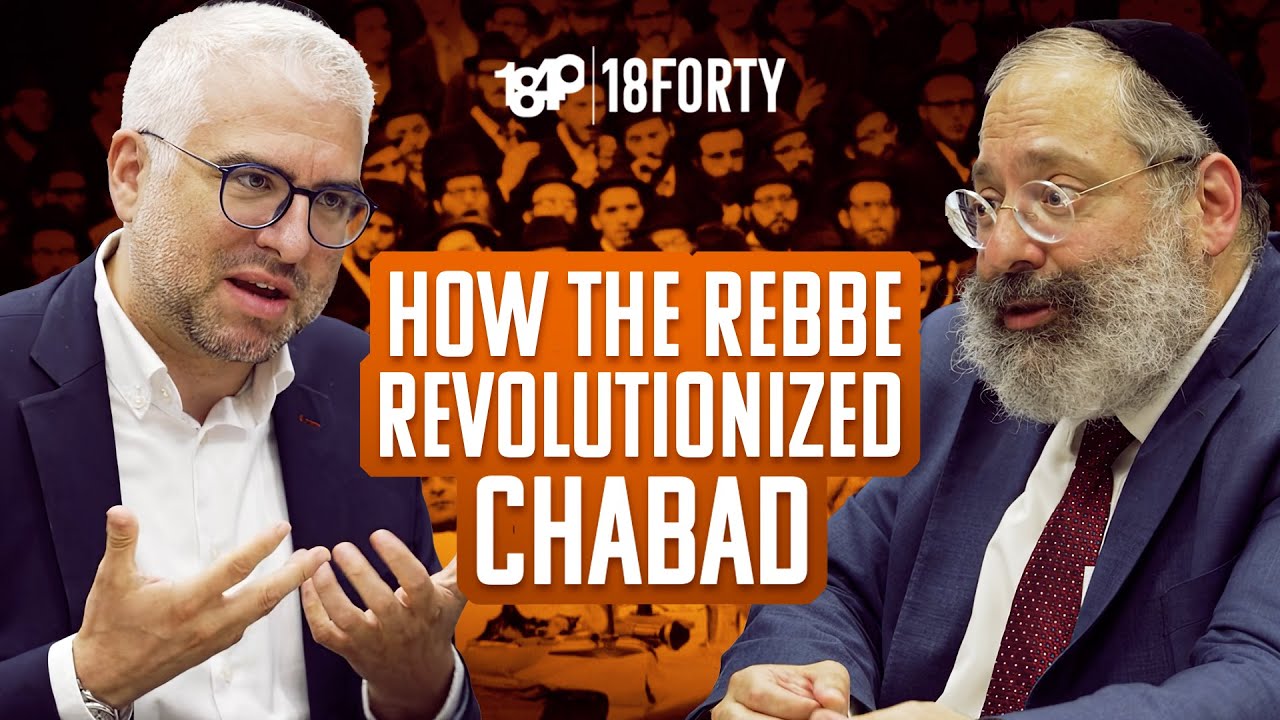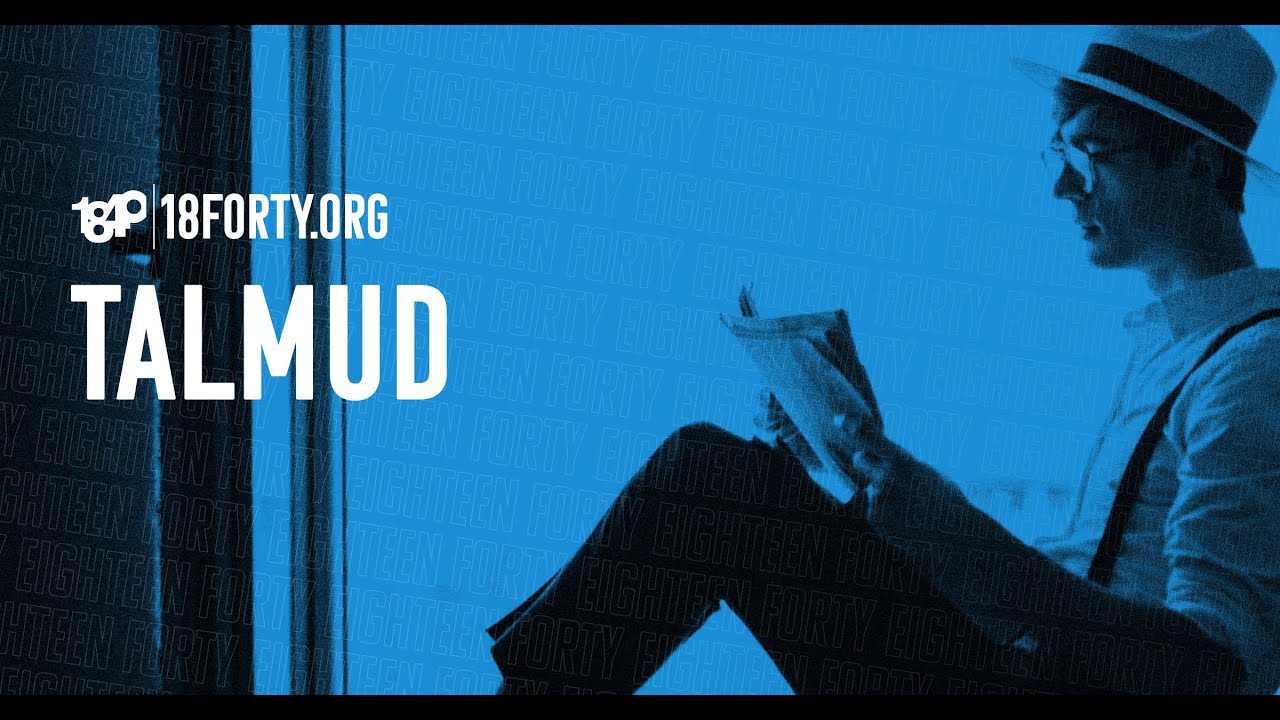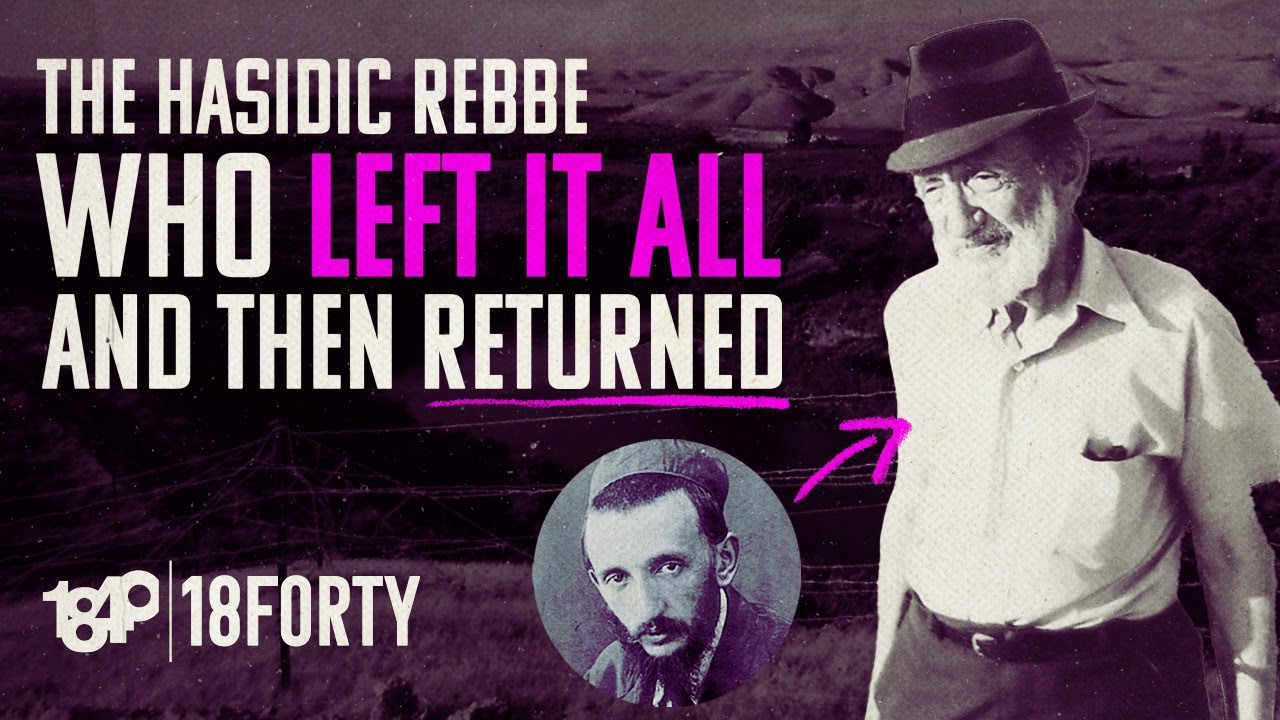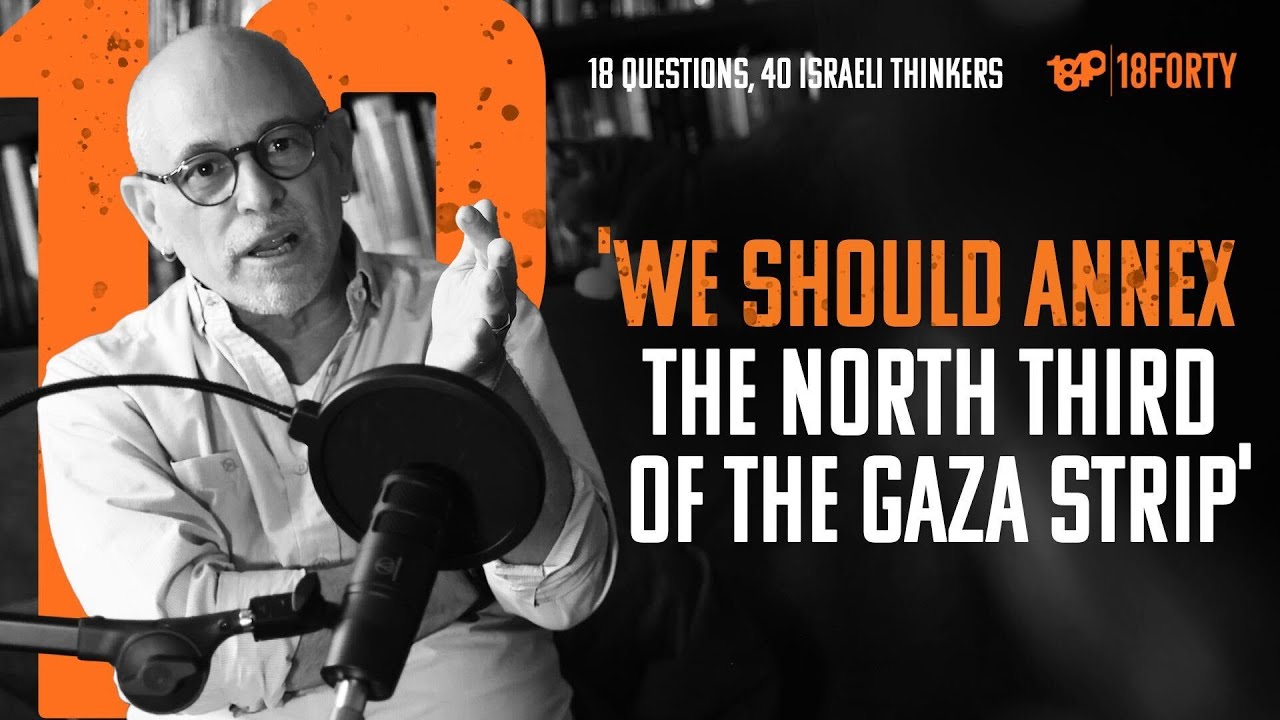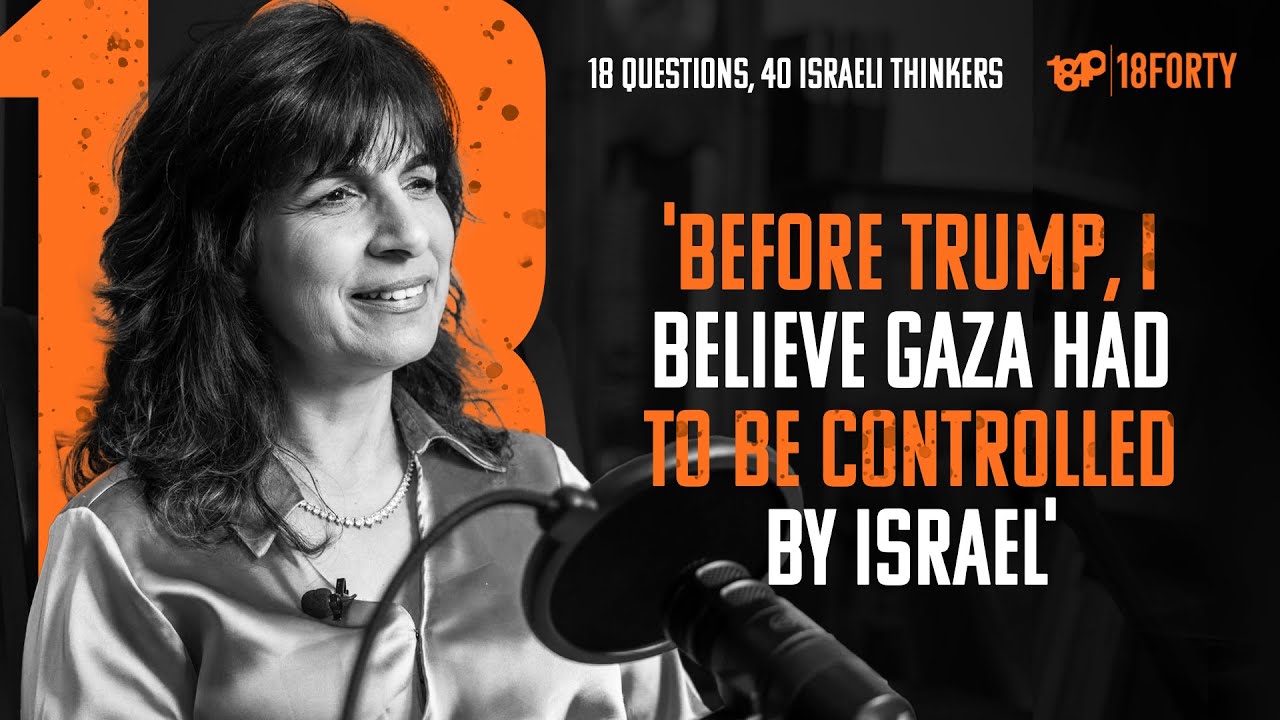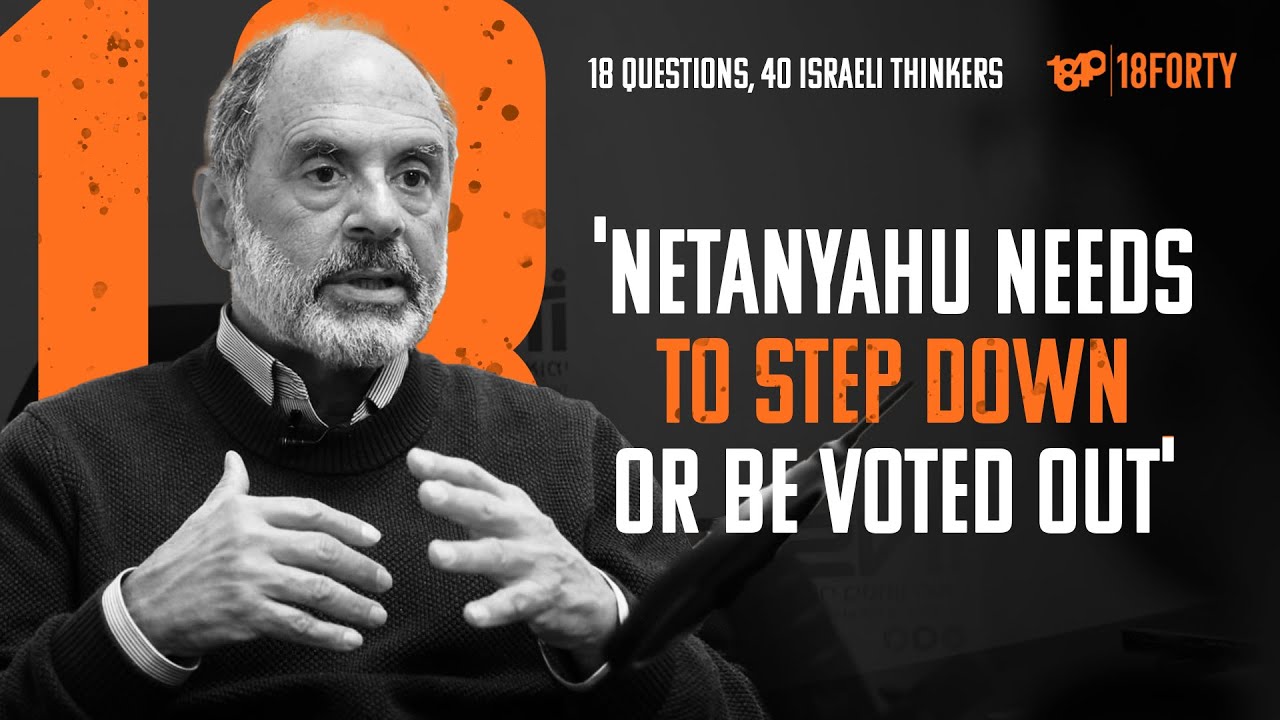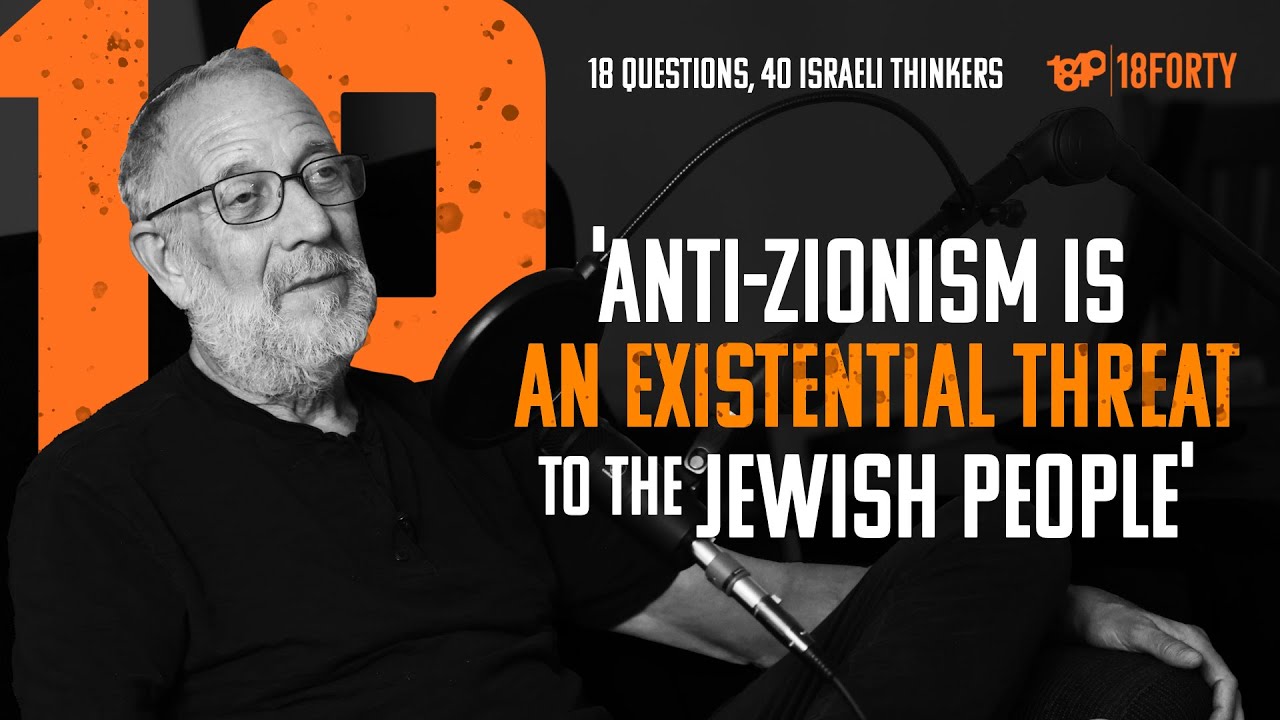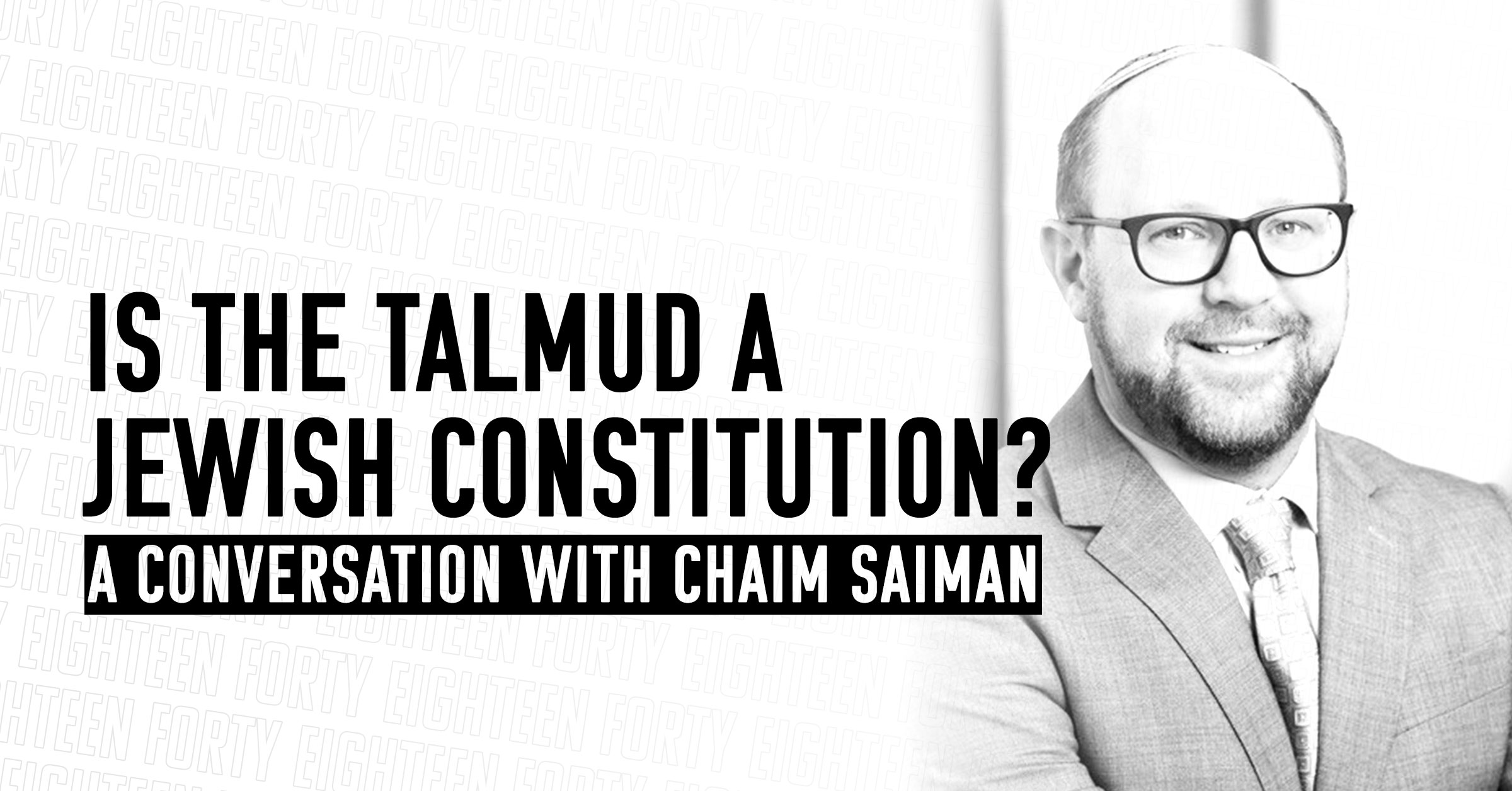
Summary
In this episode, David discusses the mystifying qualities of the Talmud and how we find meaning in the nuance of Talmudic law with special guest Chaim Saiman, professor at Villanova Law School.
Following a controversial call and subsequent delay in game 6 of the 2019 World Series, the New York Times wrote that the game was “lost in one of those Talmudic debates that enthrall hardball devotees and mystify everyone else.” Just as the fans who watched tempers flare between players, managers, and umpires, many of those who haven’t studied Talmud view the practice as senseless arguing and its participants as nitpicky.
Though its benefit may seem obvious to those of us who have been taught the value of Talmud Torah from a young age, much of what comprises Talmudic learning, including the text itself, is objectively confusing. We’re taught it is a written book, though one could make the argument that the Torah Sh’Bal Peh is neither written, nor a book. While its front and back cover create the guise of a linear interpretation of the Mishna, the Talmud is better described as a circular, non-sequential commentary. Tune in to join David and Professor Saiman in exploring these peculiarities and their impact on Talmud study.
Transcript
David Bashevkin:
Welcome to the 18Forty Podcast where we discuss issues, personalities, and ideas about religion and traditional world confrontation with modernity, and how on earth are we supposed to construct meaning in the contemporary world right now? I am so excited to be sitting with my dear friend, Chaim Saiman, who is a professor at Villanova Law School. I know him for quite a long time. He recently published a book called “Halakhah: The Rabbinic Idea of Law,” published by Princeton University Press, in conjunction with the Tikvah Fund. Chaim, welcome to the 18Forty Podcast.
Chaim Saiman:
Thank you. It’s great to be here.
David Bashevkin:
It’s really exciting to have you. Usually when we talk we are walking, we’re mobile. So the fact that my most Talmudic, peripatetic, wandering-mind friend is sitting still and talking to me means a great deal. And if you need to pick up the mic and walk around the room and pace, feel free to do so.
Chaim Saiman:
Sure. Do you remember that joke? There’s an old joke, when they first introduced the phones to the shtetl in Eastern Europe. So the old ones, you had to hold the base with your hand and the ear piece with the other hand, and they showed it to all the Yiddin that had it at work and they said, “Okay, this is great, but what do you talk with?”
David Bashevkin:
So you wrote a book called “Halakhah: The Rabbinic Idea of Law,” and what’s so strange is that all of Jewish law essentially derives from the Talmud. There are so many books that were written based on the Talmud that have assembled Jewish law on our modern day applications. But even the ones that were written – the books of Jewish law, like Maimonides, Rambam, the Shulchan Aruch of Rav Yosef Karo – all of these works, when you open them, they’re very easy and clear to navigate. You know where you could find the laws of Sabbath, you know where you can find the laws of kosher. More or less, the laws are written sequentially. Why is the original book of Jewish law, namely the Talmud, written so non-sequentially? Why is it such a maze? Why wasn’t there a more sequential compendium of Jewish law written?
Chaim Saiman:
All right… The Talmud of course is based on the Mishnah, so I think we ought to start there. The Mishnah is somewhat organized, right? Not perfectly in the way that we think we would do it, but there are six orders (Sedarim) in the Mishnah, and there’s a whole bunch of tractates. And they largely, with some exceptions, stick to the topic at hand. The Talmud is, as you know, formerly a commentary in the Mishnah and often starts that way, but can then move around and get distracted pretty easily. So let’s try to break down this question that you’re asking. The first thing I say is, Jews have been studying the Talmud very intensively for thousands of years. But what exactly the Talmud is, nobody really knows, in part because there’s nothing else like it. If we go backwards from the Talmud, so you get the Mishnah. The Mishnah is a little bit like the Talmud, not really. And before that you have Tanakh, nothing like the Talmud. So in some sense, it just appears –
David Bashevkin:
Let’s break down what our options are. The Talmud could be a commentary on the Mishnah, that’s option A. That’s probably how it’s structured on the page, it takes off, but then it goes on all these tangents that have nothing to do with the Mishnah that it’s commenting on. Option two is, it’s a book of Jewish law. You open it up and this is how you find out how to live like a Jew. Option number three is, maybe it’s a commentary on the Bible. It really goes back a lot, and the first question of the Talmud is wedding the Mishnah back to the Torah. And it asks in Brachos, “Tana heikha ka’i, where are you coming from? Where is the Mishnah deriving its law from?” So there are a bunch of options and there’s no introduction –
Chaim Saiman:
There’s no introduction. Not only is there no introduction, there’s no beginning. In other words – and I write this in the book – on the very first page of the Talmud, when you study the sugya in Brachot about Kriyat Shema, let’s call it one of the more well-known, mainstream Halachot, right at the beginning. Immediately, you have to be holding T’vul Yom. Which is, let’s just say, at the very opposite end of the spectrum. I think there’s probably many people who’ve been learning for many years that don’t know there’s a Masechet called T’vul Yom, much less what it’s about. So right away, on page one it’s telling you, not only is there’s no introduction, there’s no real beginning. It’s a circle, because at every point you can pick it up and you may or may not know what’s going on. And in that way, it’s a book in the sense of, we print it between two covers, but is it really a book? Now, you also said the word written. Remember we call this “Torah She’be’al Peh”. So we, today and for a while, have engaged with this as a written thing, but it clearly has a lot of Be’al Peh qualities. So to go back to our peripatetic walks, there’s a way in which the Talmud feels like it’s a bunch of people walking and talking. And that I think, the oral-ness of it is very much retained in it in a bunch of ways.
I’ll tell you the analogy I use with my law students, who almost rarely grew up in the Jewish environment and understand it. So I said, “You can think of the Mishnah as the case that we’re going to read today in class, and everybody prepares the case. And then there’s a class discussion, and we might say, “Well, this case, yesterday we read a different case, it looks so different.” And we’ll start going about this, around about that, the professor might pose some hypotheticals and the class will discuss it. It will start saying, “Oh, Justice Holmes. I know a story about Justice Holmes.” And go on about that. “Now imagine someone taking notes. And then, that’s year one. The next year as a professor, I say, “I’m assigning the case and I’m assigning the notes from last year. And now that’s part of the text. And now the discussion can go off the case, or it can go off last year’s notes.” And some students said something in class, “Was that right, was that wrong?” And that was run through the cycle five, six, seven times where every time I’m assigning not just the case, but all the notes. So sometimes we won’t even get to the case. Because it’ll be the notes, something that came up in class, and it’s a little less structured.
Now, students give good answers, sometimes students give bad answers. That’s the Talmud. Then there’s a process, we’re saying, okay, in there is the law. And the post-Talmudic process, the job of the Rishonim in some ways, and different Rishonim do different things. But when we think about it is, okay, let’s now rifle through all that and figure out what are the actually correct rules. So the Talmud seems, oftentimes it’s records of debates, sometimes with a sense of what the right answer is, sometimes not. Sometimes that sense comes because we know the rules that were applied to figure that out, sometimes not. And then all sorts of other stuff. So to go back to before the Talmud, you have the Mishnah of course, but you have Midrashei Halakha, Midrashei Aggadah, all those also get filtered into the Talmud. The Talmud’s like the bucket that collects all this stuff. And that’s why today, more or less, we don’t study these midrashim independently, sometimes, but we kind of… Because they’re all, not all of them, but that mode of thought is all sitting there in the Talmud, and that’s where we access. And then what the Talmud does is it almost preempts or supersedes the stuff that came before. So the Tosefta, the Midrashei Halakha, the Midrashei Aggadah –
David Bashevkin:
All of those conversations.
Chaim Saiman:
And to some degree, the Mishnah itself are not usually studied independently, but studied through and within the Talmud because the Talmud contains lots of it, though not all of it.
David Bashevkin:
So when you look at this – and I really did enjoy your analogy of the tangents in class being canonized for the next semester – so they clearly preserved that orality, that wandering conversational tone that you can have. Why do you think they wanted to do that? Coming back to this question, and we’ll talk more about the title of your book, “Halakhah,” which is normally translated as Jewish law. Why preserve that orality? Why not, when you finally edit it, we’ve both written books, we both know how important the editing process is. If I had all of the side conversations and cute vignettes that I wanted included in my book, it would be unreadable. So why not edit it and structure it? Why preserve that orality?
Chaim Saiman:
So I’m going to a little bit rephrase your question. Sometimes it’s asked as, “Why didn’t they write the Rambam?” Because the Rambam –
David Bashevkin:
Why didn’t they just write a code of law?
Chaim Saiman:
Right, and it’s shocking to think just how amazing the Rambam is. That he was able to tame this untamable mass of learning and of texts and of ideas, and not just figure out who’s right or wrong in his view, but give it some order and give it some structure. And he did this of course without computers, without any of the tools that we would use. It’s an amazing feat to think about it, how one single person did this. But what it does is it says, okay, you can argue whether the Rambam paskened correctly in every case, but basically, here’s a book that we might call, “The Rules Derived from the Talmud”. I think that’s a very fair description of what the Mishneh Torah is. Just putting that up against the Talmud makes it clear that, well, the Talmud is not that, it’s got all these other things. So why? We can ask a couple of questions. When you said, why didn’t they decide? One question is, “Was there a ‘they’ who decided?” In other words, there’s clearly a collection process, right? But was it ever thought that it would become what it became? I mean, maybe, maybe not, hard to know. But at least we got to think of the possibility that that wasn’t its original ideal. Two, I think as part of an oral text, in other words… Maybe this is just for the specialists. In other words, one thing that’s happened is that, let’s say in the last 200 years, and certainly in our era, we have decided that studying Gemara is not quite for everybody, but for a very large cross section of people.
David Bashevkin:
Like the Daf Yomi program.
Chaim Saiman:
Like Daf Yomi or in schools. I mean, if the ninth grader says, “I don’t want to go to Gemara shiur, I’d rather go to study Chumash,” we say, “That’s nice, get your tush into the Gemara shiur.”
David Bashevkin:
I mean, this has become the staple.
Chaim Saiman:
This has become the staple. So I think that’s its own question about, what happens to the Gemara when that happens, because maybe this is a bunch of top scholars talking amongst themselves, which is –
David Bashevkin:
It would be like reading a Supreme Court decision.
Chaim Saiman:
Well, not the decisions, maybe the internal deliberations –
David Bashevkin:
Gotcha.
Chaim Saiman:
Maybe that’s what it is.
David Bashevkin:
But let’s assume that it was meant to be read and it was accepted in that way –
Chaim Saiman:
So it clearly, at some point, becomes accepted that way. That’s true. If you think about how different schools of thought analyze it, we see differently. So the Geonim, for example, generally tried to – and this is a tradition that leads into the Rambam –
David Bashevkin:
The Geonim being, we’re talking now in the 800s…
Chaim Saiman:
8-900s, this was one of the first identifiable group of people who are already seeing the Gemara as something separate from them, in other words, as opposed to them doing it. And one way to think about it is that, the Gemara is an accretive work, right? That’s what I’m trying to get to with my several rounds. But at some point that stops, and since then no one has made more Gemara, we have always then seen the Gemara as being sealed – called Chatimat Hatalmud, it’s now a thing – and now we access it as a thing that we’re outside of. Even there you could see that the Geonim, who are the earliest level or layer of post Talmudic scholars, it is a separate thing, but they feel a little bit more ownership of it. Whereas as you move into the Rishonim, one of the things that distinguishes them is that the Rishonim are –
David Bashevkin:
They’re assuming that this is binding.
Chaim Saiman:
They’re assuming that this is binding, they’re assuming that they are very different from it, that they are now engaging in something that is outside of them. As opposed to the Geonim, there’s some of that, but there’s some slippage too, because, “Well, that’s the Gemara talking, but we do this.” That language. Where they’re willing to say that some of the back and forth in the Gemara is a little less canonized and maybe some of the other things. By the time you get to Rishonim that tends to…
David Bashevkin:
The cake is fully-baked.
Chaim Saiman:
The cake is fully-baked, I think that’s a good way to say it. But the Geonim’s project is, okay, how do we figure out what the rules are from this massive text? And to do that, they do a bunch of things. One, they try to get rid of all the back and forth – the shakla v’tarya, the dialogue – and they try to pair it down to its rules. Two, they create a pretty stark distinction between Halakha and Aggadah. The Geonim are responsible for demoting the status of Aggadah –
David Bashevkin:
The stories of the time, almost the more theological parts.
Chaim Saiman:
Sometimes they’re theological, sometimes they’re just hard to categorize. Sometimes they’re kind of fill-in the biblical narrative, they’re fill-in to the Talmudic narrative itself. So the Geonim promote the Halacha, the rule, by doing that –
David Bashevkin:
And they seem to deliberately demote the status.
Chaim Saiman:
They say that. These moves make sense if what you’re trying to do is to get some compacted rules. And that feeds into the Rambam, I mean, he does some of his own innovations. But then think of people like the Ba’alei Ha’Tosfot: they don’t write new Gemara, but they kind of do the Gemara to the Gemara.
David Bashevkin:
Correct, they start asking internal contradictions –
Chaim Saiman:
So they’re not trying to –
David Bashevkin:
And use them as stepping points to conceptualize –
Chaim Saiman:
That’s right. Here’s what they’re not trying to do: they’re not trying to say, “Okay, let me give you a concise view of the rules.”
David Bashevkin:
Correct.
Chaim Saiman:
They’re essentially continuing, they’re saying the Gemara is not, its form is important as well. In other words, if you’re like the Rambam, and he more or less says this, the form of the Gemara is almost tragic. Because ideally, it should look like the Mishneh Torah. I think the Tosfot understood, “No, the medium is the message, the form is the substance.”
David Bashevkin:
That’s such an important point, you’re talking Marshall McLuhan over there. The medium is the message where different personalities approached the chaos, which is the question we began with differently.
Chaim Saiman:
And I don’t think that’s at all surprising. I think if one learns Gemara, there’s going to be a part of you that’s going to want to be the Rambam, or the Riff, and there’s going to be –
David Bashevkin:
Synthesize and make it clear –
Chaim Saiman:
The pare down, tame, organize. And there’s going to be a part of you that’s going to want to get in there with the Ba’alei HaTosfot –
David Bashevkin:
Get in the mess.
Chaim Saiman:
And get in the mess. I think those are, so the way I see it, could you predict that one would be the Riff and one would be Tosfot, maybe not. But to my view, those have to be the reactions you would get to it. Now there are other reactions we can talk about. What they both share, I would say, is that even the Ba’alei HaTosfot don’t really do a whole lot with the Aggadah. It’s very interesting that from the time of the end of the Talmud, whenever that is, to the period we call it the Geonim and the Rishonim, Aggadah is generally not dealt with systemically. And it’s only at the end of that period you have people you’re familiar with, the Maharal, the Maharsha, the Ein Yaakov, these are all 16th century. Then we start like, oh wait, what’s this other thing? And that starts to become a little bit of its own discipline. So I’ve always found that interesting, that the Gemara clearly thinks that Halakha and Aggadah go together, that we don’t know it’s theory of it. Because it’s not that people talk about their two parts of the Gemara: there’s the Halakhik part and the Aggadik part. Sometimes that’s right, but sometimes that’s inaccurate, because it’s the same part.
David Bashevkin:
Correct. Famously, the Maharsha, who’s the commentary that can be found in the back of the Gemara, so he published a work on Halakhah, and he published a work on the stories of the Aggadah, and he originally published them separately, and he wrote in the introduction that he actually regretted that. And when it was later published they integrated the two works together.
Chaim Saiman:
They integrated, although it still has different font. It’s funny, today people will say, if you ask what’s Halakha and Aggadah, sometimes their reflex is to look at the font that the Maharsha, which is a very strange thing. But I think this is, if we go to maybe our own era, let’s say the last two generations, I think one of the interesting developments, and I reflect on this a little bit in my book, is an attempt to try to reintegrate the two. And this starts with an essay written a hundred years ago by Chaim Nahman Bialik, who wrote a famous essay called Halakhah and Aggadah. And it’s not so much an analytical essay, it’s a little bit of a poetic meditation on the question. But I think that, in a certain sense, is sort of going back behind the Geonim and saying, “Wait a minute, when the Gemara puts these together and it’s the same” – because it’s actually strange. We know lawyerly analytic personalities, and we know poetic flighty personalities. And they tend to be different people. And one of the strange things, someone like Rava, or Abaye, any of the heroes of the Talmud, they can do both within the span of a second. And we tend to imagine in our heads, Rav Chaim Brisker and Rav Levi Yitzchak of Berditchev. Those are not the same people, and yet there’s something in the Gemara –
David Bashevkin:
The Hassidic like personality and the more serious –
Chaim Saiman:
Yeah, something like that. And yet here they are being narrowly confined in a precise form of logic, and then being open to wild flights of ecstasy and spiritual fantasy right next to each other. And making sense of that, I think if you want to make sense of the Gemara, you want to be able to somehow account for that.
David Bashevkin:
So what is your accounting of why Halakhah and Aggadah, the stories and the legal discussions, are so seamlessly interwoven with one another? Why not have two separate books?
Chaim Saiman:
So I think one here, we would start with Tanakh itself, which in its own way does this. The Torah, by which I mean the Chamisha Chumshei Torah, also has this. It has its law parts – Parashat Mishpatim, Parashat Ki Tetze – but often those are interwoven with narratives itself, and while the Gemara’s version of that looks quite different, I think it’s important to start there –
David Bashevkin:
They’re mirroring, I’ve never heard that, they’re mirroring the structure –
Chaim Saiman:
That in a way, this is in the Torah itself. American law books don’t have a story part.
David Bashevkin:
Yeah, I want to get to that, we’ll talk more about American Law.
Chaim Saiman:
We’ll talk about it. So I would say first, it’s already in the Torah and in Tanakh, it looks differently in the Gemara. So part of what I try to show in the book… I have a rule: any statement that starts with, “The Gemara always,” the rest of that sentence is inevitably false. Anytime, if you ever hear somebody says –
David Bashevkin:
Gemara always does X, X is false.
Chaim Saiman:
X is invariably false. I mean, it is such a varied set of materials that does so many different things that is… Now, as you learn more, I have to say, as I’ve learned more, it looks a little less arbitrary, and I’ve told my chavrusa, I said, “The first thing we do is, after we do the Mishnah, we read the Tosefta. And what that will do is that, might take away 35% of the shock value of what’s going to happen. Cause you go, “Oh, that’s where it’s coming from.” And there are some things, for example, someone pointed out to me, just to talk a little bit about structure, that the Gemara can ask three types of questions. It could ask, “Mina hani milee ,” like you said, “where’s this from?”
David Bashevkin:
Where’s this law from? Where is it derived from?
Chaim Saiman:
Reading the Mishnah, where did the Mishnah get it from? It can ask a, “Ooreh Minhu,” or a, “Ve’hatanya,” in other words, “Isn’t there a parallel text that seems to push in a different direction?” And it can ask an “I’bay Le’hu,” which is a hypothetical built on top of it. Now, not every sugya has all three, but what somebody pointed out to me – and I haven’t yet found it to be not true – is that they will always come in that order. In other words, it will always be a “Mina hani milee, where’d you get it from?” And then a, “Ve’hatanya, doesn’t this push against something else?” And then finally, an “I’bay Le’hu, let’s expand this outwards.” And that’s interesting, because that is a structure. And the Gemara will – not each discussion will have all three of those, but you’re never going to get the third one before the second one.
David Bashevkin:
Out of order. There’s a process –
Chaim Saiman:
So one thing is that if you pay attention, there is a little bit more structure than part of what happens in Yeshiva study. Typically, in Yeshiva study, we tend not to focus on that, we tend not to focus on the structure. And you can ask, “When we say we are learning Gemara in Yeshiva, are we learning Gemara or are we learning the Gemara and then as read and interpreted by Rishonim, Halakhists, Acharonim?”
David Bashevkin:
Let’s actually use that as a jumping off point. I wanted to talk about, I remember we had a conversation many years ago about a poster that you saw, and I think it’s still in the introduction to your book –
Chaim Saiman:
Yes.
David Bashevkin:
But it’s the poster that you saw in my childhood shul, my synagogue, my shul growing up.
Chaim Saiman:
Also my wife’s childhood shul.
David Bashevkin:
Yeah, your wife and I grew up in the same shul, our families know each other quite well. And there was a poster in the lobby of the shul that said, it was advertising a class of what was going to be held, and what was on that poster?
Chaim Saiman:
Every time I speak about stuff like this in a law school, this is at Harvard, at Yale, at Oxford, I always start with this, because this will grab them. So this is a poster that, in some sense, is like any other poster, and in some sense is really, really different. So here’s the part that’s the same. It tells you there’s an event happening, a talk by a rabbi, it tells you when it’s happening, and it tells you there’ll be food and who’s paying for it. And I say, you walk around any university, all…
David Bashevkin:
That’s standard.
Chaim Saiman:
That’s standard.
David Bashevkin:
Who sponsored the event –
Chaim Saiman:
There’s food –
David Bashevkin:
The lunch –
Chaim Saiman:
There’s food, right?
David Bashevkin:
6:30.
Chaim Saiman:
Exactly. But then it’s who’s talking, and what are they talking about, and who are they talking to? So let’s start with who they’re talking to, and then we’ll work back into the story. So this was on a Shabbat afternoon, and this was a, they brought in what we call a scholar in residence, some outside expert to talk to the crew. As you know, this show is full of fairly learned people –
David Bashevkin:
Professionals.
Chaim Saiman:
Professionals, some lawyers, but not all, the lawyers themselves would not say that they’re practicing any form of Halakhic law in their legal practice.
David Bashevkin:
My father’s a doctor.
Chaim Saiman:
Right? Doctors, lawyers, business people, and it’s Shabbos, and I’ll come to that in a second –
David Bashevkin:
The weekend.
Chaim Saiman:
No, it’s Shabbos because, lichora, we don’t talk about business and commerce on Shabbos.
David Bashevkin:
Gotcha. Okay.
Chaim Saiman:
So that’s the context. And you’re right, it’s a little bit more relaxed, we’re not all sitting there zoned in totally.
David Bashevkin:
They’re not getting their CLE credit.
Chaim Saiman:
And it’s also a time of Shabbos, which is a little more chilled. So the rabbi’s name is Rabbi Eliyahu Levine, and his title printed on the flyer is the “Rosh Kollel of the Kollel Choshen Mishpat in Lakewood”. Now, for this crowd, you know what that means. But when I speak to law school, and it’s probably worth just hearing it out. I said, “What’s a Kollel? A Kollel’s like an institute of advanced study. And universities have these centers and programs. Choshen Mishpat is for business commercial law. Lakewood of course is one of the most well known places. The relationship exactly between this Kollel and the Lakewood Yeshiva, I haven’t totally drilled down on, but that’s where it’s coming from. So I said, in the vernacular, speaking to law school, “This is like the Sterling professor of corporate law at the Yale Law School, the country’s most prestigious institution of learning, and this is some very specialized thing. And this person is coming to give a talk. And what’s he talking about? So in Talmudic terms, the sugya he was talking about, it’s called Ani Ha’mahapech Be’charara,” which literally means an impoverished person who is about to take possession of something.
David Bashevkin:
Yeah, who’s rifling through –
Chaim Saiman:
Rifling through, charara is a cake or something you eat. And of course, even in the Talmud, that doesn’t literally mean that, it means that somebody is in the process of acquiring rights to property. And then, what restrictions, or rights are there on other people, from interfering or jumping the gun or intervening in that right? In lawyer’s terms, this is what we sometimes call something like “tortious interference with contract,” or maybe “the duty of good faith in contractual negotiations”. And I said, any other place in America, if I tell you that somewhere today, in the United States, there’s a group of about a hundred people coming to hear an expert talk about the duty of good faith in contract negotiations, you would say, this is most likely an academic conference at a law school, and maybe a CLE in one of the big law firms in town or whatnot. But if I told you that this was a weekend afternoon with a bunch of people, most of them who aren’t lawyers, and as a spiritual exercise, you would say that’s ridiculous. I mean, to say it is to laugh. Look, I’m a law professor, I love teaching this stuff, and I think a lot, like we all do –
David Bashevkin:
It’s through those eyes that you’re able to point out the absurdity, because I go to that shul. I never would’ve looked twice at that poster, “Oh, they’re talking about Ani Ha’mahapech Be’charara.”
Chaim Saiman:
Right, that’s normal.
David Bashevkin:
What a normal topic –
Chaim Saiman:
But why is that normal? In a second we translate it out, it’s kind of ridiculous to say, “We’re going to go to the country club tonight.” And –
David Bashevkin:
It’s remarkable almost. This gets to the question that I want you to talk about, and maybe it relates even more closely to the thesis of your book, which is not, “What is the Talmud,” but, “How is the Talmud used? What are we doing with this book now? And almost looking in the last 100, 200 years especially, what are people doing when they open up the Talmud and study? They’re not really trying to figure out what to do practically with their lives, necessarily, I mean, certainly implications come up.”
Chaim Saiman:
Right, it’s there. So –
David Bashevkin:
What was that poster advertising?
Chaim Saiman:
What was that poster advertising, this is the thing, I love these questions because if you, as we did, grow up in this community, it’s totally normal. But it’s only normal, to actually explain what we’re doing is actually very hard, and to some degree that’s what my book’s about. The thing we call it, so what they’re doing, so let’s say it’s this way: So you say, “Wait a minute,” and I almost naively asked somebody there, “It’s Shabbos, why are we talking about business?” Now, I of course knew the answer, but I wanted to hear people articulate it. And they looked at me like, “What, are you crazy? This has nothing to do with business.” Like, what do you mean, “this has nothing to do business”? This is a telltale point of business and commercial law. And by the way, the way that the lecture was given was not a “how to,” it was, well, here’s what the Talmud says, there’s different ways to understand it, here’s the Rambam’s approach, here’s the Rush’s approach, in an analytical way. I’m not sure many of the people actually followed all the details. But when you ask them what they’re there for, they would not have said law. They would have certainly not said business. They would have said, “talmud Torah.”
We’re all very used to this concept, but part of what I’m trying to do in the book is, that’s a strange concept. Why is the study of Torah an important thing? Why is the study of the law, particularly? So, as I said, as a law professor, we think very highly of ourselves as a profession. But of all the adjectives people would say about law professors, saying they’re engaged in spiritual activity never comes up, and to say it is ridiculous. And I sometimes think to myself, when I’m at work writing an article or teaching on contract law, that’s work, lawyer’s work. If I go home and study with my chavrusa effectively a very similar topic, all of a sudden –
David Bashevkin:
It’s spiritual. We make a blessing over it. God is hovering in some sense.
Chaim Saiman:
God is hovering somewhere. And we bring totally different, it’s a totally different emotional experience.
David Bashevkin:
Well, let me just add before you kind of lay out your approach to this, it’s something I think about a lot. This has been a continuing controversy, and I would call quirk throughout history in the way people look at the Talmud, and what I would call Talmudic thinking and Talmudic Jews. There certainly were debates and criticisms from the Christian world on the Jews’ obsession with the details of Jewish law and neglecting some of the more lofty spiritual values. If you walk into a Yeshiva and watch 100, 1000 people studying, none of them are likely overtly talking about God, they’re probably talking about something very nitty gritty. And there have been criticisms within the Jewish community about this, particularly some strands in the Hasidic community. There was a student of Frierdiker Rebbe, who was the sixth Rebbe of Chabad, who famously wrote an article saying that the only way to really make Talmud a spiritual experience is, you have to explain it through mysticism and through more theological context. But just to talk about what happens if my cow gores your cow among 15 year olds in Yeshiva, none of whom own cows, none of whom have probably ever touched a cow, is absurd. And that’s the absurdity that you’re laying into. The quirky aspect that I’m thinking about is, the New York times, when they were discussing game six of the 2019 world series, where there was an interference play. I don’t know enough about baseball to even appreciate this –
Chaim Saiman:
But you know this thing happened, which is more than me.
David Bashevkin:
Literally on the, it was a front page story in the New York Times, a sports story cause it was game six. The game was delayed for two hours, they’re fighting this over. And the way they described the story was with the following language, they said, “It was the type of debate that could only be described as Talmudic,” and this is the words that they used, “…that enthralled devotees and mystified everyone else.” I love that phrase, “enthralled devotees and mystified everyone else.” And when you walk into our shul and you see a poster, or when Christians were looking into the Jewish world, to say that they were mystified is probably an understatement, some of them thought that they were neglecting the very importance of religion. And when certain Jews look at other Jews, Talmudic thinking can either just be mystifying, what on earth are you doing, why are you so enthralled by this at best, at worst, it could be frustrating, it can be something that is ridiculed. So what is your approach? Where does the spirituality emerge from a Saturday Shabbos afternoon conversation about tort negotiation?
Chaim Saiman:
As you know, I start the book with Jesus, because of course a book on Halakha has to. But I think it’s important, not just because it’s cute, but part of the reason I think that’s interesting is, Jesus lives even before the main characters of the Mishnah – Rabbi Yehuda HaNasi, certainly, maybe two generations more than Rabbi Akiva – Jesus probably lives a little bit before them. And yet, you could see that the type of thinking we’re going to find in the Mishnah of breaking things down into categories and saying, “Is this okay? Is this okay? What about this? What about this? What about this?” Which of course is more voluminous than the Talmud, but exists in its nascent form in the Mishnah, is already there. And it’s almost like, the second that it’s brought on the table in the Jewish public square, someone, in this case Jesus, is already saying, “Wait a minute, that’s really dangerous, you’re going to go off the deep end with that.” I think that’s really important. And it’s like –
David Bashevkin:
Jesus was basically saying that, his critique on Talmudic thinking was –
Chaim Saiman:
Emerges so early in the expression of that.
David Bashevkin:
And what was he concerned about?
Chaim Saiman:
I never read the gospels until I was almost 30, 10 years before you could do Kabbalah, I guess. But I was shocked reading it, some of it, because what did I know? I didn’t know anything about Christianity. The only thing I knew is that, when we were kids on Sunday morning and you wanted to watch something good, there’s all these annoying church shows on. But there are Halakhic arguments in there. And not just Halakhic arguments, but arguments about Halakha, about Hilchos Shabbos is a great example. So, you know, the same types of things we heard, we still hear about, “Shouldn’t Shabbos be about doing things that make you feel restful and connected, and why are you worried about all these details?” Yeah, Jesus said that, and Jesus and his students and the people would become the Mishnah –
David Bashevkin:
That critique was the critique of Christianity.
Chaim Saiman:
It’s already there, it’s really interesting. I understand why we don’t teach these things in schools, but I sometimes wonder whether, I’ll get a little sidebar, because it’s such an interesting thing. So I taught in Israel in IDC – a largely secular university just outside in Herzliya – to a bunch of Israeli students. And we started talking about Shabbat and Shabbat laws. And they came up with many of these critiques, of course, because in the current politics in Israel, this is a hot topic, and why are they enforcing these Shabbat laws and this and that. The next day I gave them the gospel texts, and they saw that yesterday, they had all parroted Jesus’s arguments. And it was so interesting to see the way they subtly wanted to walk it back from it. So they didn’t do a 180 degree U turn, but they did a 30 or 40 degree turn because they were uncomfortable. First of all, I think they were fascinated, they couldn’t believe that these arguments had gone on 2000 years ago, and were to some degree one of the big cleavages between Judaism and Christianity.
David Bashevkin:
What’s our response to that though? Meaning –
Chaim Saiman:
Let’s go forward. I’m just saying that was interesting, because even just knowing that this question is at the very beginning of the Talmudic –
David Bashevkin:
The instinctive frustration that every seventh, eighth, ninth grader has ever said –
Chaim Saiman:
And I would say 44 year olds.
David Bashevkin:
44 year olds. But that first starts when you, “Why do we care? Who cares about how you separate out the pits from a watermelon? Who cares about the intricacies about what type of knife you used? Did it cut something spicy or not? Who cares?” This is the inception question.
Chaim Saiman:
That question is there right at the beginning, at the very, very beginning, and at the beginning of Jewish-Christian dialogue. And I just think, this is not an answer to that question, but I think we got to put that on the table. And some of the things that Jesus points to are things that later show up in the Mishnah and Gemara in almost that same form, which suggests that even before those texts come together, these things are already out there. I think that’s just worth talking about. Even the story in the gospels themselves, the students are walking through the fields and they’re picking ears of corn or ears of grain, and they have a whole discussion of whether you should do that, whether you shouldn’t do that. You can read that in a whole bunch of different ways.
But then it’s clearly discussion about this question, and that’s what I think is worth understanding. In Matthew it says, “Why are you worrying about tithing the mint, the mint, the dill, and the cumin, and you leave the weightier matters of the law?” Which is exactly this question, why are we talking about all these little specifics, what about the big picture? So I think the first thing to know is that, and it’s almost natural, as soon as someone’s going to come up with what becomes the Mishnah, someone’s going to ask this question, and I think that’s worth understanding. To go forward, what I say is, there’s been different ways to address this question. One tries to minimize the space of what I call “Halakhisism” within the Jewish Canon. And you say, “Well, there’s other things, there’s the Bible, there’s the Talmud, there’s the Midrash, there’s Hasidut, there’s Hebrew poetry.” In other words to say, which is of course true-
David Bashevkin:
It’s to admit to a degree, “You’re right, this does get a little nitty gritty, but it’s not the only thing we do, we do a lot of other fun stuff too. There’s a lot stuff on the schedule, look, we’re going swimming later – ”
Chaim Saiman:
That’s right.
David Bashevkin:
The basketball court or something, you know?
Chaim Saiman:
And that is certainly true, and then there’s the opposite answer, which says, “Yes, you’re right, and that is the definition of Judaism.” And there’s a bunch of writers, typically from the more Haredi world, that take that view, that, yes, of course it’s right and that’s the point. And I try to say, maybe there’s something in between here, which is, while it’s true there are other things on the schedule, I think that in a reading of the tradition of Judaism from the Gemara onward, Halakha and Halakhic study is always sort of in the middle of it. But to say maybe there’s more going on here. And part of the argument in the book is that, and I want to be very clear, this is not every Halakhic discussion, I don’t believe that for a minute, but that one lens we might bring to Halakhic discussions is that Hazal use – and this will answer the Talmud Torah point as well – Hazal use these very particular specific laws, and the arguments about them, as their way of working through some of the big questions that we all ask.
And to me, this is why Talmud Torah is not just something designed for specialists. Nobody thinks that anyone other than a bankruptcy lawyer ought to study and be proficient in the bankruptcy code. And yet we all think that you should know the 11th chapter of Ksuvos, which is effectively about this question. This is what I mean by the rabbinic idea of law, that the legal form, and the legal argument, and the discussion, particularly it bleeds into more Aggadik questions and spiritual questions, is the way they’re talking about, what in Jesus’s terms would be, the weightier matters of the law. And one of the things the book does is goes through and tries to, not tell, but show, and take a couple of sugyot, and I’ll admit, I picked things where I think I had a good argument?
David Bashevkin:
It’s more obvious.
Chaim Saiman:
I don’t want to come and say that every page in the Talmud is like this, I don’t think that’s true. But I do think it’s true –
David Bashevkin:
Articulate more clearly, that –
Chaim Saiman:
I think we’ll give an example. So this is an example I use in the book, and it’s back to the laws of Shabbos. So if one learns Masechet Shabbos, a lot of it is very long, and a lot of is about carrying. Even though carrying is what they call the Melacha Geruah, it’s the 39th of the –
David Bashevkin:
It doesn’t really create anything.
Chaim Saiman:
Maybe because of that it needs the most analysis cause it doesn’t quite fit. So there’s a whole bunch of chapters in Masechet Shabbos about carrying. And then the sixth chapter deals with what an animal can carry, what a woman can carry, what a man can carry, and the question there is, because we would say you are wearing a jacket, we wouldn’t say you’re carrying a jacket. We say “you wear glasses,” we don’t say “you carry glasses”. We say, “you wear a hat, you wear a watch.” But an iPhone, we probably say, “He’s carrying an iPhone”. It’s interesting, women tend to say, “they wear purses,” men look at this and say, “they’re carrying purses”. Every culture is going to have this question, and this is relevant to the laws of Shabbat because –
David Bashevkin:
The difference between wearing something and carrying –
Chaim Saiman:
Because wearing something is okay and carrying something in Reshut Harabim is not. So the Mishnah then says that a man cannot, “lo yetze,” cannot go out with weapons, a sword, a mace, a spear. And that’s the Tanna Kama, that’s the first opinion. And then Rebbe Eliezer says it’s okay, because he says “tachshitin hein lo”, which I would translate as, “they’re an adornment,” or, “they’re decorative”. And then, Chachamim say, “eino ela gnay”.
David Bashevkin:
A third opinion.
Chaim Saiman:
A third opinion, or maybe the first opinion, hard to know, said, “No, these are a disgrace.” And they cite the famous pasuk in Yeshayahu perek bet, “Llo yisa goy el goy cherev, v’lo yilmidu od milchamah,” in the end of days, people will beat their swords into plowshares.
David Bashevkin:
Great Miami Boys Choir song.
Chaim Saiman:
Great Miami Boys Choir song. Let’s break this down. At one level this Mishnah is about something very boring, which is, all these objects –
David Bashevkin:
I’ll be real. I almost fell asleep, when you were telling it over now.
Chaim Saiman:
All these objects, can you carry them, can you not? But let’s pay attention, and by the way, this is what the Gemara does, I’ll condense its discussion a little bit. Rebbe Eliezer, he says it’s an adornment. What does that mean? And why do Chachamim start talking about the sages, the end of the days, Mashiach, what’s that got to do with anything? So the Gemara understands that this is a question. When you say it’s an adornment, we learn a few things. We learned that this sword is not a self-defense sword, it’s not a pikuach nefesh sword, because otherwise the claim is, bad guys are going to come. But it’s a symbolic sword, it’s a sword worn not for its functional purpose, but for its symbolic purpose. And what Rebbe Eliezer is saying, by saying that the symbol of the sword is a tachshit, is an adornment, he is now making a claim about how one can, or maybe one should, appear.
So now let’s think of symbolic swords. So if you’ve ever seen the famous picture of Louis the 14th, he is dressed in high heels, silk stockings, a big wig, a long fur coat, and a sword. He’s not going out to battle, why is he wearing the sword? Why is his official, formal, royal portrait, with the sword? Because it’s not being used as a sword, it’s being used as a symbol of power. This is what a man is. A man is strength, is power, is ruler-ship backed by the sword. And in fact, Rebbe Eliezer cites a pasuk from Tehillim emphasizing that. And now the Chachamim say, “Ah, we’re talking about ideals? We’re talking about how we represent ourselves? We’re talking about who we are? We don’t get our norms from the swords.” They basically say, “You drank the Roman Kool-Aid, we get ours from Yeshayahu. Swords, maybe they’re necessary in this world, but they’re a disgrace. You should be embarrassed to walk like that! What are you saying about yourself, we’re talking about who you are!” And then the Gemara says that this has to do with what we think is going to happen to humanity in end of days.
The point is this starts, and maybe even ends, as a very technical question about carrying on Shabbat, but immediately the Mishnah is already banking, that depends on something else. That depends on, what do you think about, maybe not so much swords, but to borrow a modern term, “sword culture”. How should we present ourselves? How do our ideals filter into our dress and what we wear? And this question, whether it’s carried or worn, whether it’s a disgrace or an adornment, is a normative question about that which the sword represents, which the Gemara immediately understands is a normative question about how society ought to be structured and where it goes. If I tell you that’s what’s on tap here, that is something that maybe ought to be at the center of our communal discussions. That’s not just something for experts, that’s something that we might say that’s a philosophical question, that’s a theological question, that is a fashion question in its own way and the way that those things interact with each other.
David Bashevkin:
So they wove together philosophical values.
Chaim Saiman:
And the Gemara is very deliberate in reading it that way, and I think here the Mishnah is doing it, too. Does that mean that it’s not about carrying on Shabbos? No, it is. But does that mean that that act, so therefore now let’s say, I don’t carry a sword on Tuesday either, but now, when I study that, whether I carry a sword or not is not the question, the question is, what are the ideas and the norms that are emerging from that discussion, and what am I supposed to take away from it? But, I said it might do the work of a philosophical discussion, but it’s not. It’s nestled, it’s anchored in a mitzvah. It’s anchored within this broader structure of Shabbos and of obligation to Shabbos. And I think, to come around, I think there’s something very powerful here, what Hazal do is, I think they do have these discussions in their way, but they’re not abstracted in the way the Greek philosophers do. What is the ethic of war? They’re baked into how we construct ourselves in a very narrow, confined, daily, or in this case, weekly, way. And I think that that is part of the idea that they’re after. That ultimately, the framework for all this is the mitzvah, is Hashem’s command, and that the obligation to study it in all the weird ways that we do is, at least in its ideal sense, intended to bring those kinds of discussions, and mediated through these Halakhic discussions, which are ultimately about that which God wants from us.
David Bashevkin:
Very practical, to wed an abstract, conceptual world of spirituality, of commandment of God, and integrating it with a very mundane, detailed… And the Talmudic discussion allows those to be wedded to one another.
Chaim Saiman:
And not to go back, that’s why I think those discussions are fair. That’s why, like you said, however the Gemara is written, the tradition that says that we don’t just read the black letter rules, but we reengage and recreate the Talmud all the time as we learn, I think is designed to get you there. Is this true in every sugya, I don’t know, I don’t think so. But is it a possibility that we ought to be alert to? Yes. This is different than the letter from the student of the Frierdiker Rebbe, who almost didn’t want to take sure…
David Bashevkin:
Coming back to that criticism, he thought the argument about cows should be about something more lofty –
Chaim Saiman:
So I also am saying that, but the difference is, I’m taking it – at least initially – seriously that it’s about cows. What is it about cows and what is it saying –
David Bashevkin:
There’s a philosophical question underneath there.
Chaim Saiman:
It’s immediately abstracting it to shore as some symbol for in the way that Hasidic thought tends to work.
David Bashevkin:
But balancing these two –
Chaim Saiman:
There’s always a danger, right, because when it’s meshed into these technical legal things, it’s very easy to lose because you can get wrapped up.
David Bashevkin:
To lose what?
Chaim Saiman:
To lose the thread, you can get wrapped up in only seeing it as law. And I think that is one of the consequences of this way of framing it: it’s a known risk, to put it in insurance terms, of this way of doing it. But there also, there might be some known benefits to.
David Bashevkin:
That reminds me of the quote that you quoted in an earlier article that you wrote in a Law Review about the Brisker methodology to Talmud, where Rabbi Soloveitchik – you cited, Rabbi Soloveitchik – spoke about the method of learning of his grandfather, known as Brisker methodology, where he said that the pots and pans, the eggs and onions, disappeared from the laws of meat and milk, and the laws of Kashrut were taken out of the kitchen and removed to an ideal Halakhic world constructed out of complexes of abstract concepts. And I think you’re saying something a shade different, where you have the pots, you have the pans, but it’s through those discussions that you are able to uncover and discover some of the philosophical tenants that hold the whole system together. So you are a law professor in Villanova, your training is as a lawyer though you spent time in Yeshiva. I was wondering if you can comment a little bit about your experience being involved in both, I don’t want to call it Jewish law about the Talmud and American law. What has American law, if anything, learned from the Talmud?
Chaim Saiman:
Sure, this really connects to what we’ve been talking about. One of the seminal articles that first brought Halakhic thinking or Rabbinic thinking into the mainstream of American law was an article written in 1982 by Robert Cover.
David Bashevkin:
In the introduction to Harvard Law Review?
Chaim Saiman:
Right, so every year, the editors of the Harvard law review say, we’re going to pick one professor to write the biggest article of the year, it’s like the opening night at The Met. And that’s called the Term Forward for the Harvard Law Review. And in 1982 they asked Robert Cover, who’s a Jewish law professor at Yale, came up through the conservative movement, to do so. And he wrote an article that became very, very famous called Nomos and Narrative. And what’s interesting from our perspective, I mean that article has a whole history in the American law scene, but he starts with rabbinic material, and it’s the first time –
David Bashevkin:
Like really inside baseball.
Chaim Saiman:
That this inside baseball comes out, not just in a law review, but in the biggest law review article of the year, which winds up being one of the most important – if you were to lift the 50 most important law reviews, clearly this article is in it. And it’s really on the table. And what Cover is saying is that the thing we mean “law” is not just these collection of regulations, but a deep story about ourselves and our ideas and our motivations that the law, the legal rules, sit on top of. And that you can’t have one without the other because then it’s just force. And what he’s trying to say is, law’s not just the force of the state, for law to be legitimate in the deep sense, it has to have the buy-in. And the buy-in is not always in the particular rule, but to the story about the law, the law giver, and the culture and society that produces that law.
David Bashevkin:
And that’s the title –
Chaim Saiman:
“Nomos” meaning the rule, and narrative meaning the story. And what he says is that, “Law is always ping-ponging between, do we mean law in the narrow sense, and do we mean the deep story sense?” And what does it mean to decide the law? He says, “A court can decide between Reuven and Shimon, who gets the money, but the court is not very good at deciding this deep structural narrative, it’s too big for it.” And he then applied it to things he saw in American law. Now I think it’s wholly unsurprising that it took someone… Now you could state this thesis having nothing to with Jewish law, and people have. But I think it’s wholly unsurprising that the person that put this on the table is someone who is reading these materials and coming from these sources, because that is a very Halakhic and Talmudic way of thinking about it in all the ways we talked about. First, the lack of enforcement in the state sense that attends Talmudic law throughout. There’s some, right, ultimately this system hangs together not because of formal state structures, but because of social structures, so I think one. Two, diffuse authorities, there’s no Halakhic Supreme court. Machloket between Rishonim, Acharonim are the thing. More than that, I always say, it’s interesting. The word “machloket” doesn’t have a great translation.
David Bashevkin:
I would translate it as “disagreement”.
Chaim Saiman:
Disagreement, but it’s more than that. In American law, we don’t think “disagreement” is an institution of the law, it is a byproduct of the inability to come to consensus. I think in Halakhah –
David Bashevkin:
It’s a feature, not a bug.
Chaim Saiman:
It’s a feature, how do we engage in a Halakhic text is we understand the parameters through the debate. Cover doesn’t talk about that, but I think that that’s a central feature of it. I think his nomos and narrative is Halakhah and Aggadah, that’s what he’s saying. He’s saying that in order for law to move society, to govern society, especially unless you want to force it, there has to be a story.
David Bashevkin:
And that comes back to our original conversation about whether Talmud –
Chaim Saiman:
And particularly when you don’t have the institutions of government to create that structure, that story is emerging from the bottom up. Therefore the stories are what direct the law at the end. I think we see this today in our political conversation, the law is very thin – it’s just words on a page – unless there’s this deeper cultural story that is the power behind it. That’s Cover’s idea, and I think it’s wholly not bemikreh, not by accident.
David Bashevkin:
It’s not surprising –
Chaim Saiman:
Not surprising.
David Bashevkin:
He derived that perspective from rabbinic law, specifically, Talmudic thinking. He’s quoting a Mishnah and then he quotes the Beit Yosef’s introduction.
Chaim Saiman:
Another one of his very interesting points was that American law is based on “rights,” that’s it’s keyword. Halakhah doesn’t have a word for “rights,” it has word for “mitzvah,” for obligation. And what is the difference between the system whose core feature is rights versus the system whose core feature is obligation? And he had a lot of thinking about that. I think it’s very similar. Of course, there are obligations in American, of course there are rights in Jewish law, but which foot goes first and which is the dominant mechanism I think matters a lot.
David Bashevkin:
Chaim, I can’t you enough for joining us. We usually end with a few shorter questions if you’ll humor me for that.
Chaim Saiman:
Sure, I’m not good at these.
David Bashevkin:
These are fairly simple. What’s your schedule? When do you go to sleep, when do you wake up in the morning?
Chaim Saiman:
As I get older both of those move earlier. I don’t always go to sleep by 10:30, but I’m mentally done by 10:30.
David Bashevkin:
And when do you wake up?
Chaim Saiman:
Early, like 5:00, 5:30. I don’t always get out of bed. So part of my own thing is to say, “I really need to go to bed when I’m mentally done,” because otherwise you just waste time.
David Bashevkin:
This is a strange question to ask somebody who just wrote a book, but if you were to go back to school and get a PhD or write another book, what would you write about?
Chaim Saiman:
So I’m increasingly interested in, and as I’ve written a couple of pieces that are more sociological in nature. So I’m not sure I would be a sociologist, but I want to understand more, I think my next project is how things become Halakhah. How social practices –
David Bashevkin:
Build norms.
Chaim Saiman:
Right. So questions about norms and law, minhag, and the fact that something is written in –
David Bashevkin:
Custom and law bleeding into one another.
Chaim Saiman:
Even what we call Halakhic texts, in other words, if I publish a book in Rashi script with two columns and no punctuation, that doesn’t make it Halakhah, that makes it, Saiman wrote a book in a weird format. I’m interested in the social question of, what gets understood as Halakhah, how, and why? The more I think about it, the more I realize that these are the communities saying things in a certain way. So I think my next work is likely to go in that direction.
David Bashevkin:
Gotcha.
Chaim Saiman:
It’s related to how Halakhah changes, because when do we think of a change as a Halakhic change? When is it a social change? When is it a kula? When is it a chumra? When is it a minhag?
David Bashevkin:
And now I have one last question: is there a book you would recommend for somebody who’s looking to explore – other than your own of course, which we’ve plugged more than enough – is there a book that you would recommend for somebody who wants to learn more about the project of the Talmud?
Chaim Saiman:
So there’s a book published, also very recently, by a Talmud professor, Barry Wimpfheimer, called The Talmud: A Biography, which has similarities. It’s a little bit shorter and I think maybe more towards the uninitiated. And I think he does a good job of explaining, he says that the Talmud is three things: it’s the text of the Talmud, it’s the interpretive tradition of the Talmud, and then what outsiders, and the way your New York Times, say, think the Talmud it is. And it’s an interesting way of dividing it and saying, the Talmud is all three of those things. So I think he does a good job there of introducing it to audiences that may not know what it is.
David Bashevkin:
Chaim Saiman, it’s such a joy having you today. Thank you so much for this very Talmudic discussion about the Talmud. Thank you so much for joining us.
Chaim Saiman:
Thanks so much for having me, David. It’s always fun talking to you, and I hope people listening will enjoy it as much as I do.
Recommended Podcasts
podcast
Hadas Hershkovitz: On Loss: A Husband, Father, Soldier
In this episode of the 18Forty Podcast, we speak with Hadas Hershkovitz, whose husband, Yossi, was killed while serving on reserve duty in Gaza in 2023—about the Jewish People’s loss of this beloved spouse, father, high-school principal, and soldier.
podcast
Haviv Rettig Gur: ‘Hamas is upset the death toll in Gaza isn’t higher’
Haviv answers 18 questions on Israel.
podcast
Elissa Felder & Sonia Hoffman: How the Jewish Burial Society Cares for the Dead
Elissa Felder and Sonia Hoffman serve on a chevra kadisha and teach us about confronting death.
podcast
How Different Jewish Communities Date
On this episode of 18Forty, we explore the world of Jewish dating.
podcast
Red Flags: A Conversation with Shalom Task Force Featuring Esther Williams and Shana Frydman
We have a deeply moving conversation on the topic of red flags in relationships.
podcast
Einat Wilf: ‘Jews Are Never Allowed To Win, and Arabs Are Never Allowed to Lose’
The true enemy in Israel’s current war, Einat Wilf says, is what she calls “Palestinianism.”
podcast
The Dardik Family: A Child Moves Away From Zionism
In this episode of the 18Forty Podcast, we talk to Judah, Naomi, and Aharon Akiva Dardik—an olim family whose son went to military jail for refusing to follow to IDF orders and has since become a ceasefire activist at Columbia University—about sticking together as a family despite their fundamental differences.
podcast
Aliza and Ephraim Bulow: When A Spouse Loses Faith
In this episode of the 18Forty Podcast, we talk to Aliza and Ephraim Bulow, a married couple whose religious paths diverged over the course of their shared life.
podcast
Shlomo Brody & Beth Popp: Demystifying Death and the End of Life
In this episode of the 18Forty Podcast, we talk to Rabbi Shlomo Brody and Dr. Beth Popp.
podcast
‘Everything About Her Was Worth It’: The Life of Yakira Leeba Schwartz A”H
In this episode of the 18Forty Podcast, we talk to Yisroel Besser, who authored many rabbinic biographies and brought David Bashevkin to Mishpacha magazine, about sharing Jewish stories.
podcast
Menachem Penner & Gedalia Robinson: A Child’s Orientation
In this episode of the 18Forty Podcast, we talk to Rabbi Menachem Penner—dean of RIETS at Yeshiva University—and his son Gedalia—a musician, cantor-in-training, and member of the LGBTQ community—about their experience in reconciling their family’s religious tradition with Gedalia’s sexual orientation.
podcast
Benny Morris: ‘We should have taken Rafah at the start’
Leading Israeli historian Benny Morris answers 18 questions on Israel, including Gaza, Palestinian-Israeli peace prospects, morality, and so much more.
podcast
Rabbi Meir Triebitz: How Should We Approach the Science of the Torah?
In this episode of the 18Forty Podcast, we sit down with Rabbi Meir Triebitz – Rosh Yeshiva, PhD, and expert on matters of science and the Torah – to discuss what kind of science we can learn from the Torah.
podcast
Anshel Pfeffer: ‘The idea that you’ll obliterate Hamas is as realistic as wanting to obliterate Chabad’
Prime Minister Benjamin Netanyahu did not surprise Anshel Pfeffer over the last 17 months of war—and that’s the most disappointing part.
podcast
Why 1840?
In this episode of the 18Forty Podcast, we sit down for a special podcast with our host, David Bashevkin, to discuss the podcast’s namesake, the year 1840.
podcast
Larry and Tzipora Rothwachs: Here Without You — A Child’s Eating Disorder
In this episode of the 18Forty Podcast, we talk to Rabbi Larry Rothwachs and his daughter Tzipora about the relationship of a father and daughter through distance while battling an eating disorder.
podcast
Anita Shapira: ‘You cannot wipe out Hamas’
Leading Israel historian Anita Shapira answers 18 questions on Israel, including destroying Hamas, the crisis up North, and Israel’s future.
podcast
Talia Khan: A Jewish Israel Activist and Her Muslim Father
In this episode of the 18Forty Podcast, we talk to Talia Khan—a Jewish MIT graduate student and Israel activist—and her father, an Afghan Muslim immigrant, about their close father-daughter relationship despite their ideological disagreements.
podcast
Frieda Vizel: How the World Misunderstands Hasidic Jewry
In this episode of the 18Forty Podcast, we talk to Frieda Vizel—a formerly Satmar Jew who makes educational content about Hasidic life—about her work presenting Hasidic Williamsburg to the outside world, and vice-versa.
podcast
Gadi Taub: ‘We should annex the north third of the Gaza Strip’
Gadi answers 18 questions on Israel, including judicial reform, Gaza’s future, and the Palestinian Authority.
podcast
Lizzy Savetsky: Becoming a Jewish Influencer and Israel Advocate
In this episode of the 18Forty Podcast, we talk to Lizzy Savetsky, who went from a career in singing and fashion to being a Jewish activist and influencer, about her work advocating for Israel online.
podcast
Mikhael Manekin: ‘This is a land of two peoples, and I don’t view that as a problem’
Wishing Arabs would disappear from Israel, Mikhael Manekin says, is a dangerous fantasy.
podcast
Yishai Fleisher: ‘Israel is not meant to be equal for all — it’s a nation-state’
Israel should prioritize its Jewish citizens, Yishai Fleisher says, because that’s what a nation-state does.
Recommended Articles
Essays
This Week in Jewish History: The Nine Days and the Ninth of Av
Tisha B’Av, explains Maimonides, is a reminder that our collective fate rests on our choices.
Essays
I Like to Learn Talmud the Way I Learn Shakespeare
If Shakespeare’s words could move me, why didn’t Abaye’s?
Essays
3 Arguments for God’s Existence
Perhaps the most fundamental question any religious believer can ask is: “Does God exist?” It’s time we find good answers.
Essays
Fighting for My Father’s Life Was a Victory in its Own Way
After losing my father to Stage IV pancreatic cancer, I choose to hold onto the memories of his life.
Essays
Books 18Forty Recommends You Read About Loss
They cover maternal grief, surreal mourning, preserving faith, and more.
Essays
Benny Morris Has Thoughts on Israel, the War, and Our Future
We interviewed this leading Israeli historian on the critical questions on Israel today—and he had what to say.
Essays
Why Reading Is Not Enough for Judaism
In my journey to embrace my Judaism, I realized that we need the mimetic Jewish tradition, too.
Essays
A Letter to Children Estranged From Their Parents
Children cannot truly avoid the consequences of estrangement. Their parents’ shadow will always follow.
Essays
‘The Crisis of Experience’: What Singlehood Means in a Married Community
I spent months interviewing single, Jewish adults. The way we think about—and treat—singlehood in the Jewish community needs to change. Here’s how.
Essays
3 Questions To Ask Yourself Whenever You Hear a Dvar Torah
Not every Jewish educational institution that I was in supported such questions, and in fact, many did not invite questions such as…
Essays
(What) Do Jews Believe About the Afterlife?
Christianity’s focus on the afterlife historically discouraged Jews from discussing it—but Jews very much believe in it.
Essays
Do You Need a Rabbi, or a Therapist?
As someone who worked as both clinician and rabbi, I’ve learned to ask three central questions to find an answer.
Essays
Between Modern Orthodoxy and Religious Zionism: At Home as an Immigrant
My family made aliyah over a decade ago. Navigating our lives as American immigrants in Israel is a day-to-day balance.
Essays
Do We Know Why God Allows Evil and Suffering?
What are Jews to say when facing “atheism’s killer argument”?
Essays
The Erasure of Sephardic Jewry
Half of Jewish law and history stem from Sephardic Jewry. It’s time we properly teach that.
Essays
From Hawk to Dove: The Path(s) of Yossi Klein Halevi
With the hindsight of more than 20 years, Halevi’s path from hawk to dove is easily discernible. But was it at every…
Essays
Judith Herman Is Giving Voice to Survivors
Dr. Judith Herman has spent her career helping those who are going through trauma, and has provided far-reaching insight into the field.
Essays
‘Are Your Brothers To Go to War While You Stay Here?’: On Haredim Drafting to the IDF
A Hezbollah missile killed Rabbi Dr. Tamir Granot’s son, Amitai Tzvi, on Oct. 15. Here, he pleas for Haredim to enlist into…
Essays
The Hardal Community Explained: Torah, Am Yisrael, and Redemption
Religious Zionism is a spectrum—and I would place my Hardal community on the right of that spectrum.
Essays
A Brief History of Jewish Mysticism
To talk about the history of Jewish mysticism is in many ways to talk about the history of the mystical community.
Essays
Rabbi Eliezer Berkovits’ Complicated Portrait of Faith
Meet a traditional rabbi in an untraditional time, willing to deal with faith in all its beauty—and hardships.
Essays
How and Why I Became a Hasidic Feminist
The Lubavitcher Rebbe’s brand of feminism resolved the paradoxes of Western feminism that confounded me since I was young.
Essays
When Losing Faith Means Losing Yourself
Elisha ben Abuyah thought he lost himself forever. Was that true?
Recommended Videos
videos
Mysticism
In a disenchanted world, we can turn to mysticism to find enchantment, to remember that there is something more under the surface…
videos
18Forty: Exploring Big Questions (An Introduction)
18Forty is a new media company that helps users find meaning in their lives through the exploration of Jewish thought and ideas.…
videos
Talmud
There is circularity that underlies nearly all of rabbinic law. Open up the first page of Talmud and it already assumes that…
videos
The Hasidic Rebbe Who Left it All — And Then Returned
Why did this Hasidic Rebbe move from Poland to Israel, only to change his name, leave religion, and disappear to Los Angeles?
videos
Did Judaism Evolve? | Origins of Judaism
Has Judaism changed through history? While many of us know that Judaism has changed over time, our conversations around these changes are…
videos
Jonathan Rosenblum Answers 18 Questions on the Haredi Draft, Netanyahu, and a Religious State
Talking about the “Haredi community” is a misnomer, Jonathan Rosenblum says, and simplifies its diversity of thought and perspectives. A Yale-trained lawyer…
